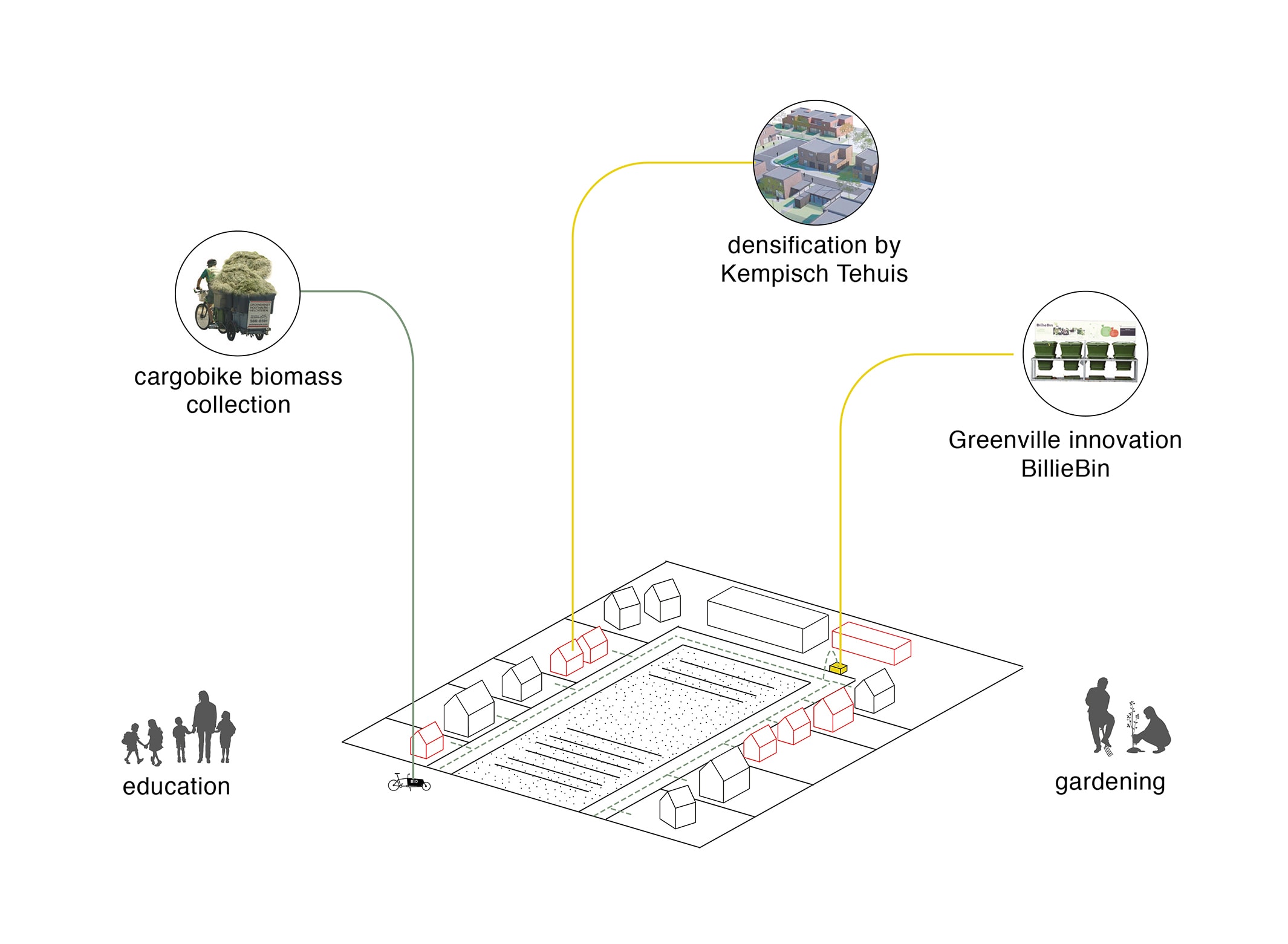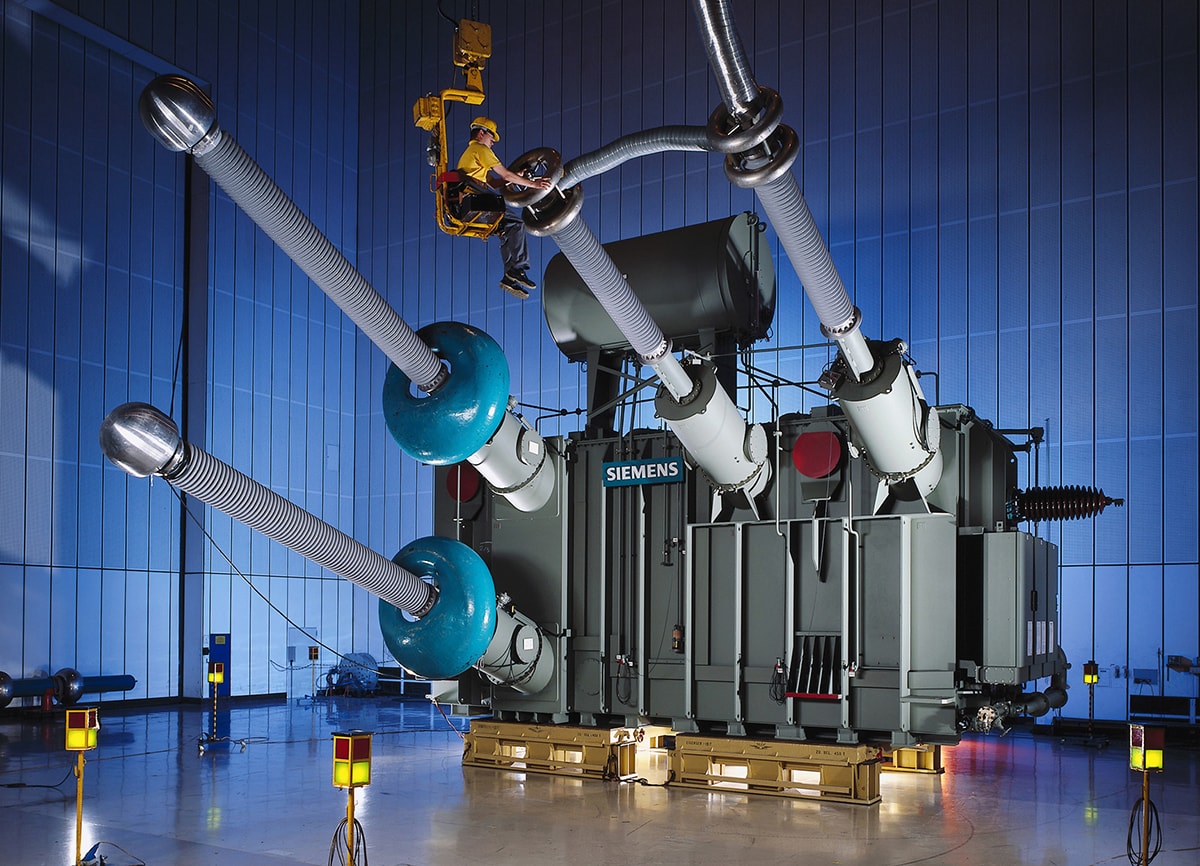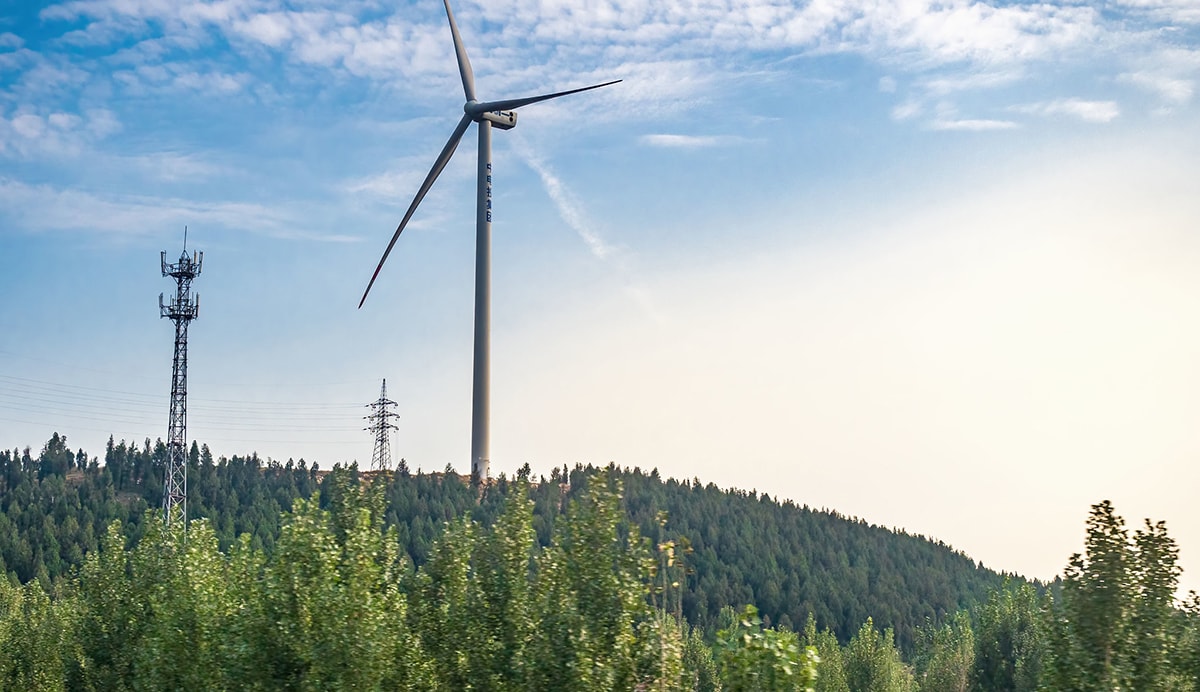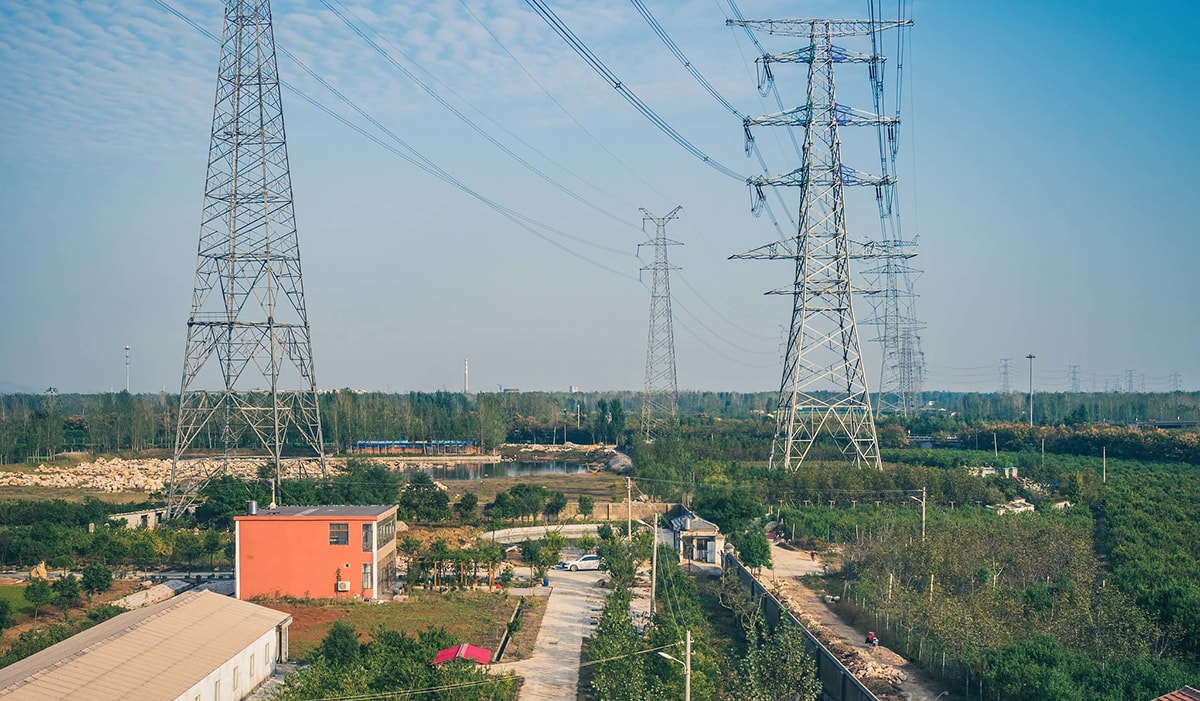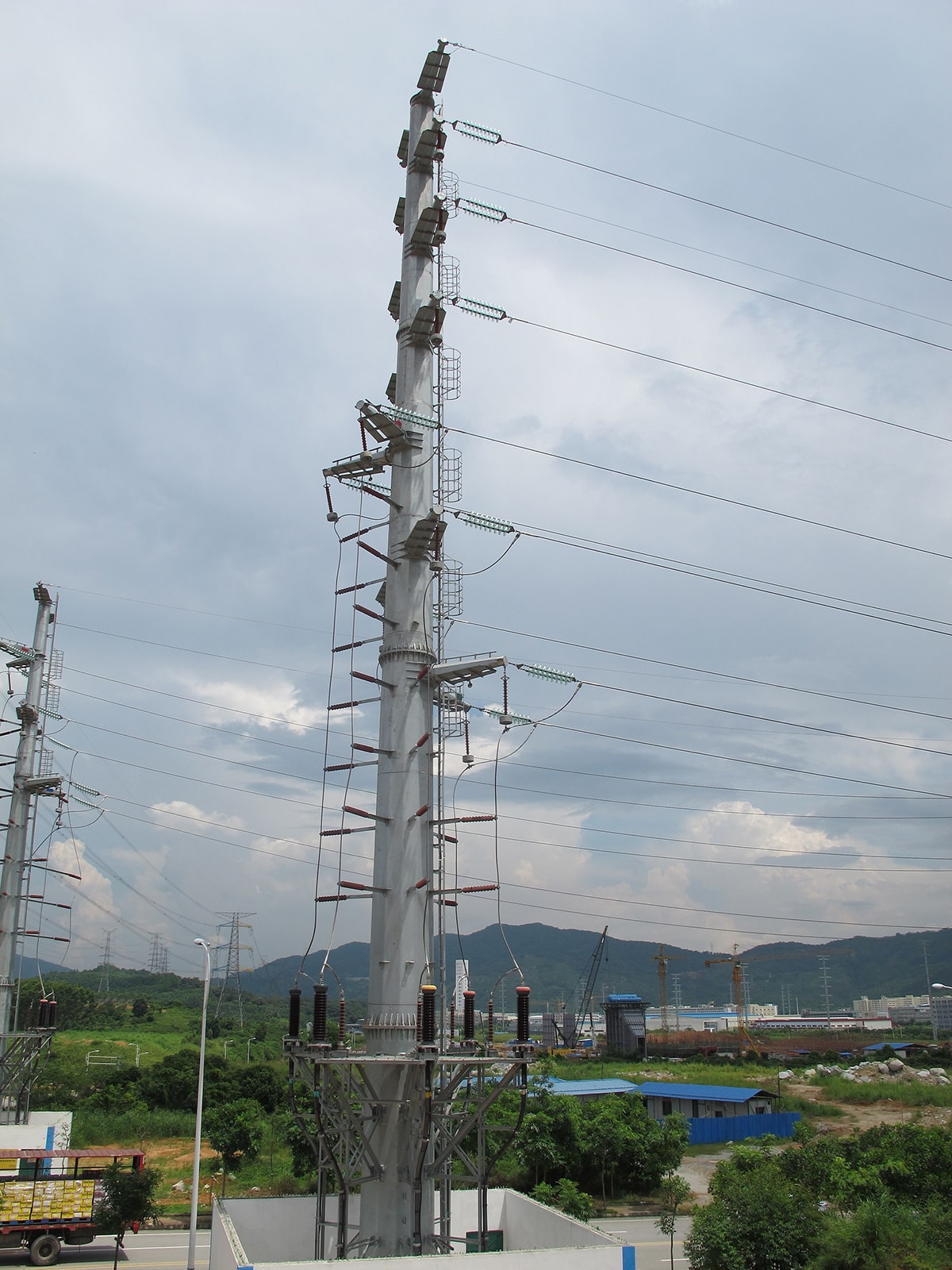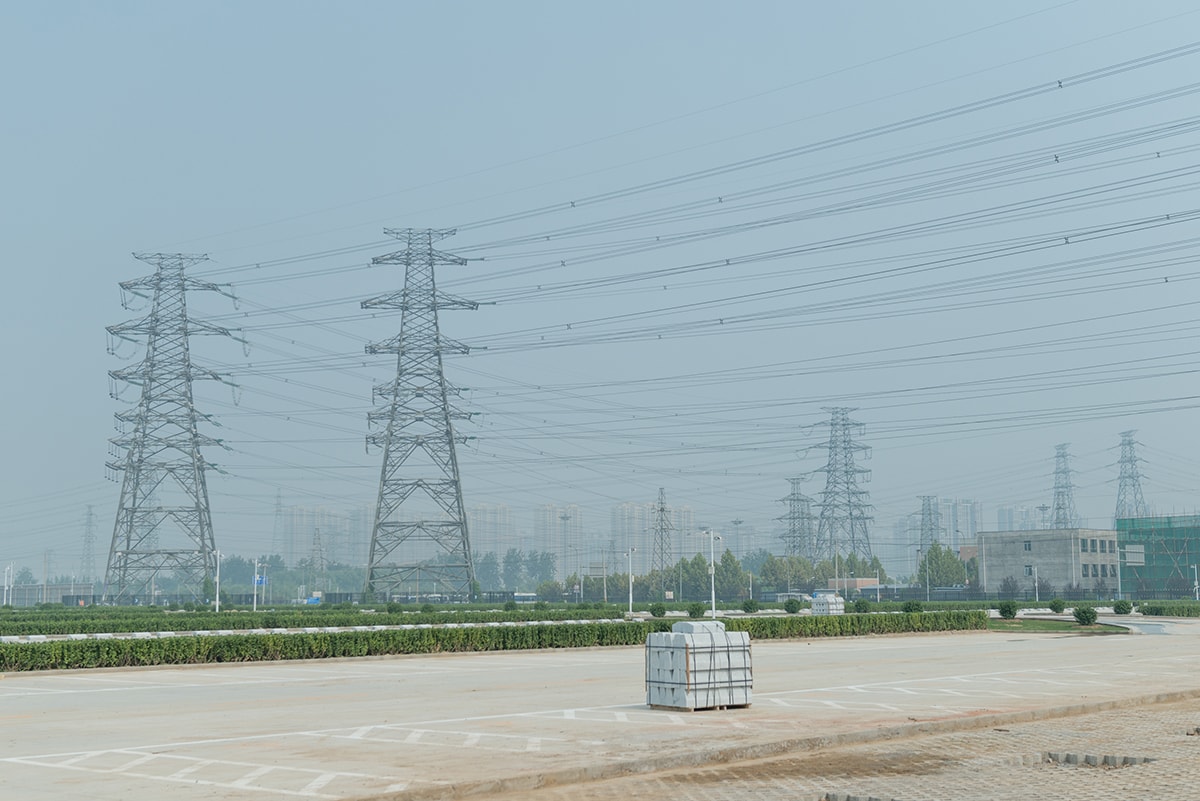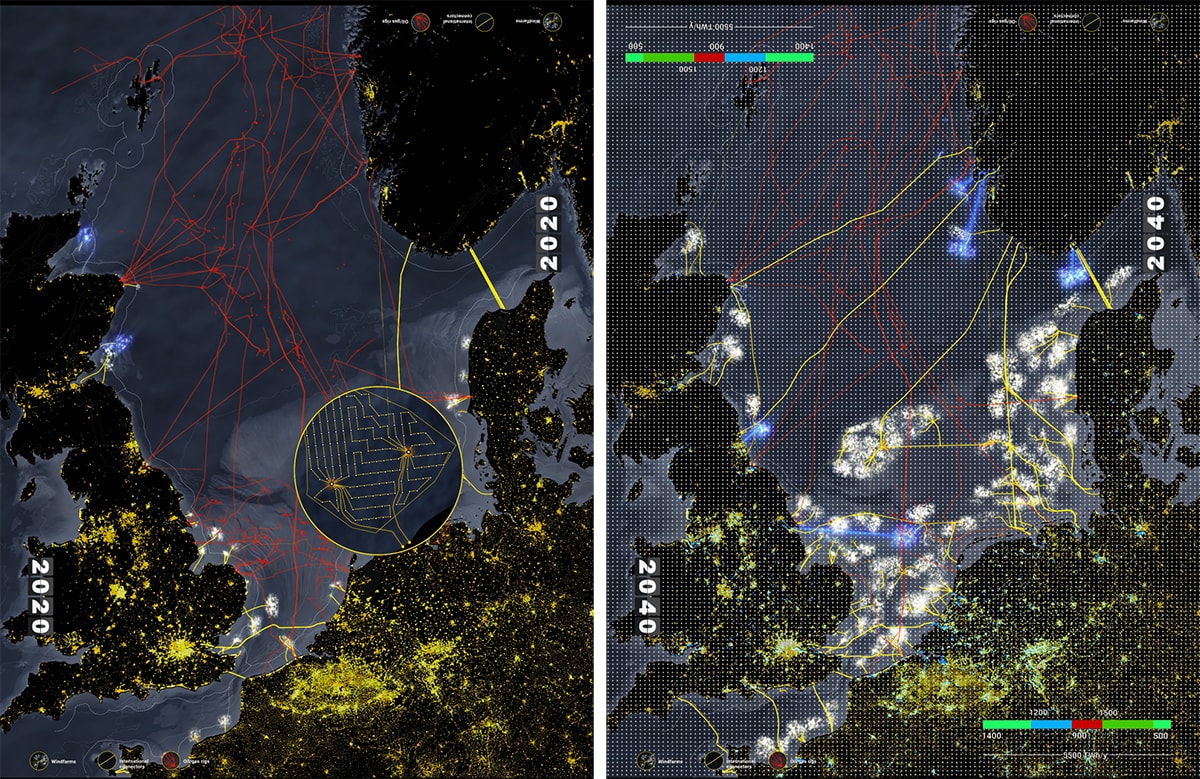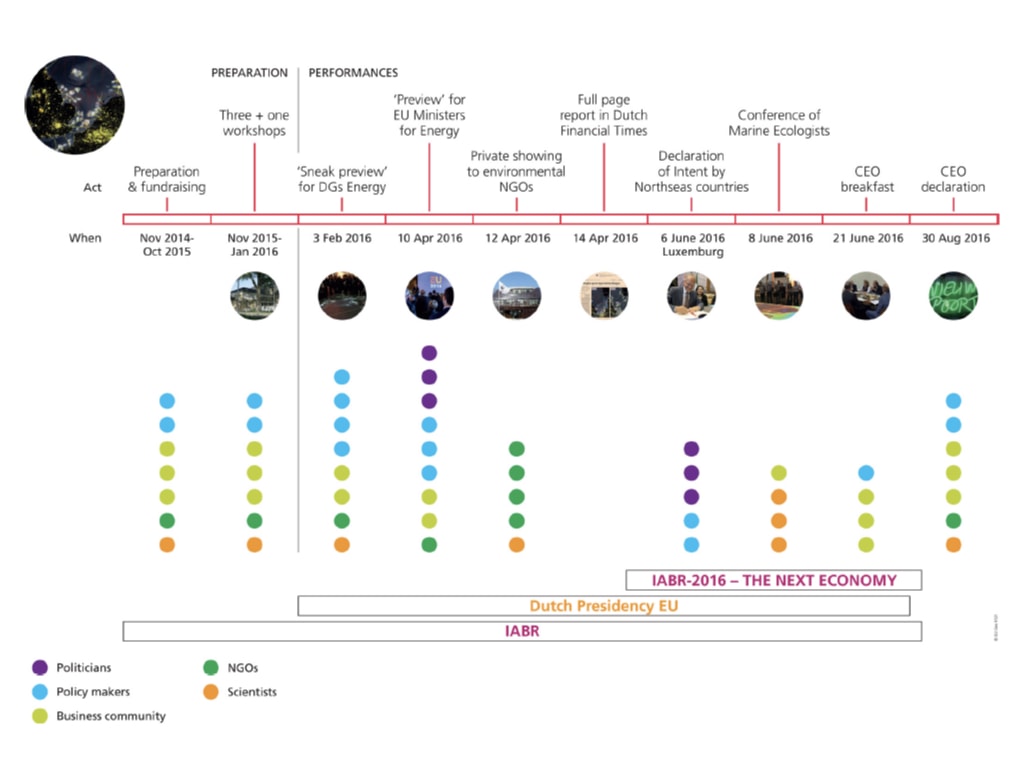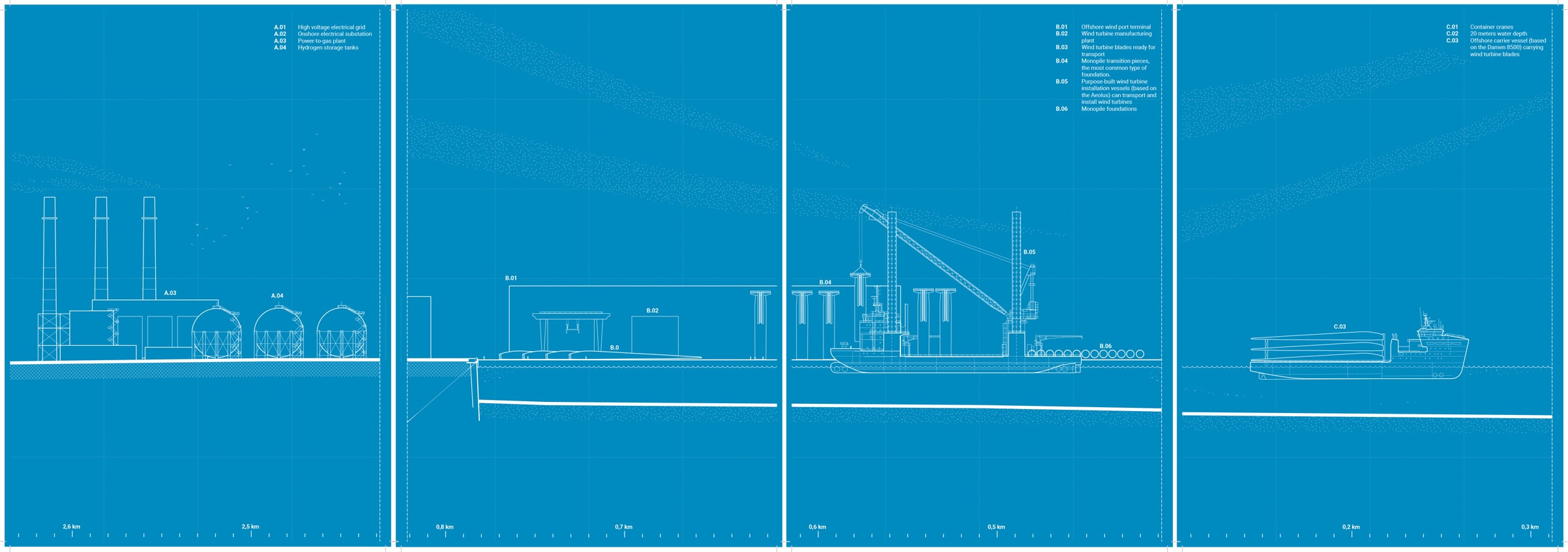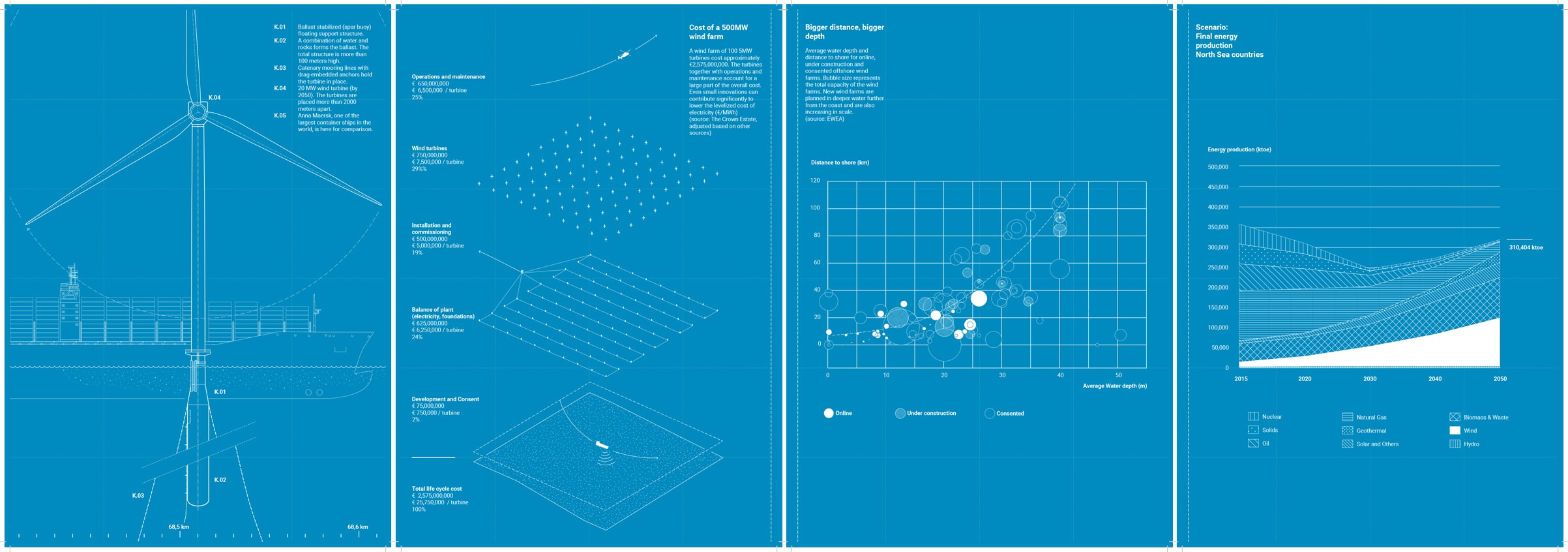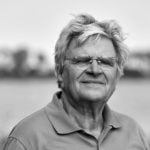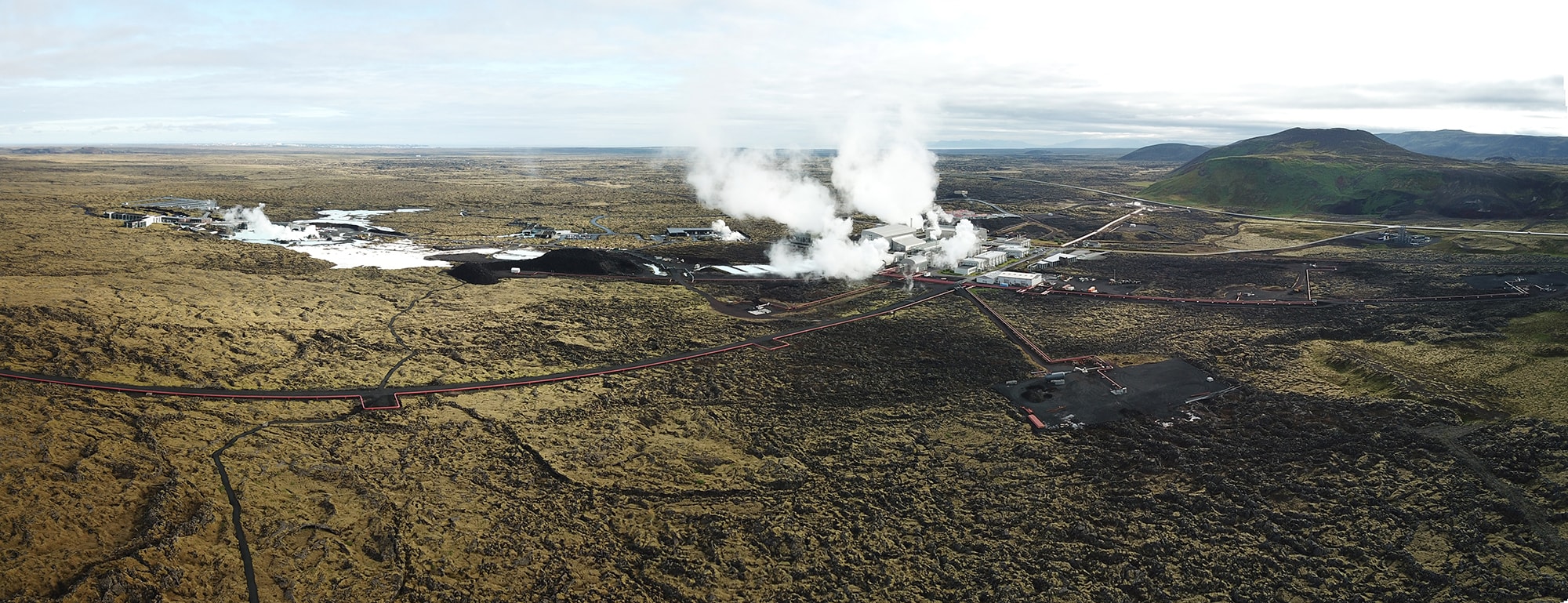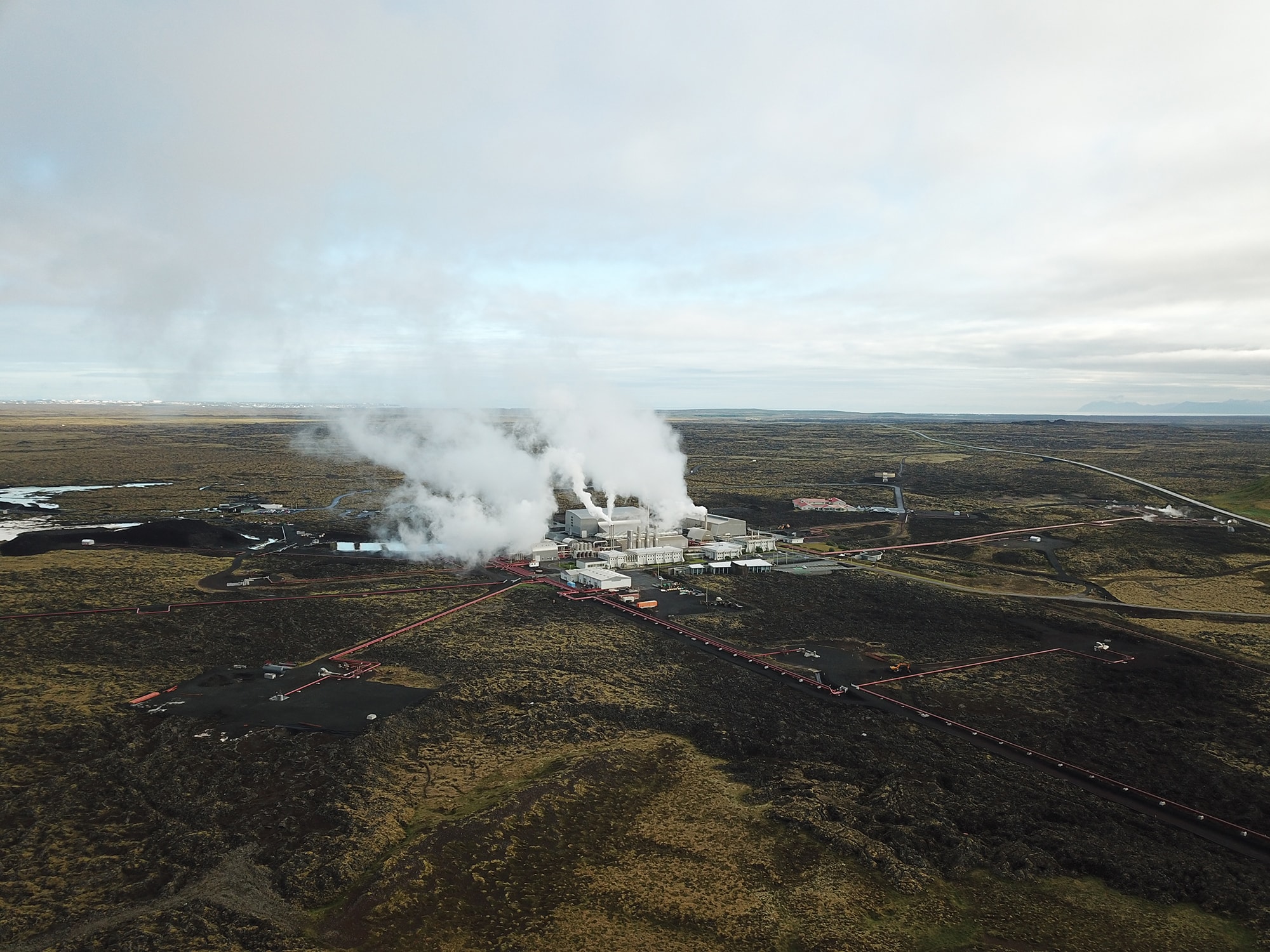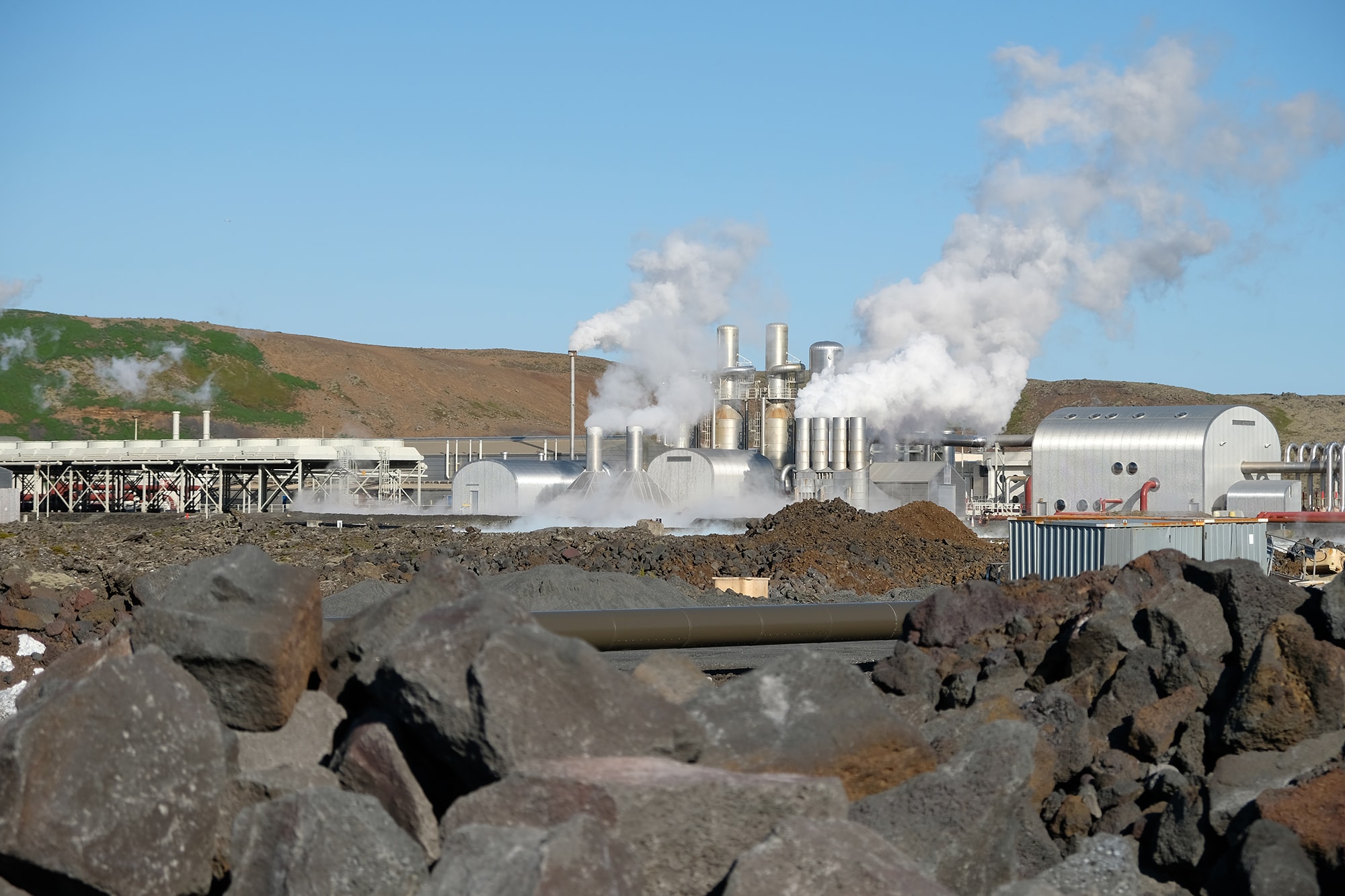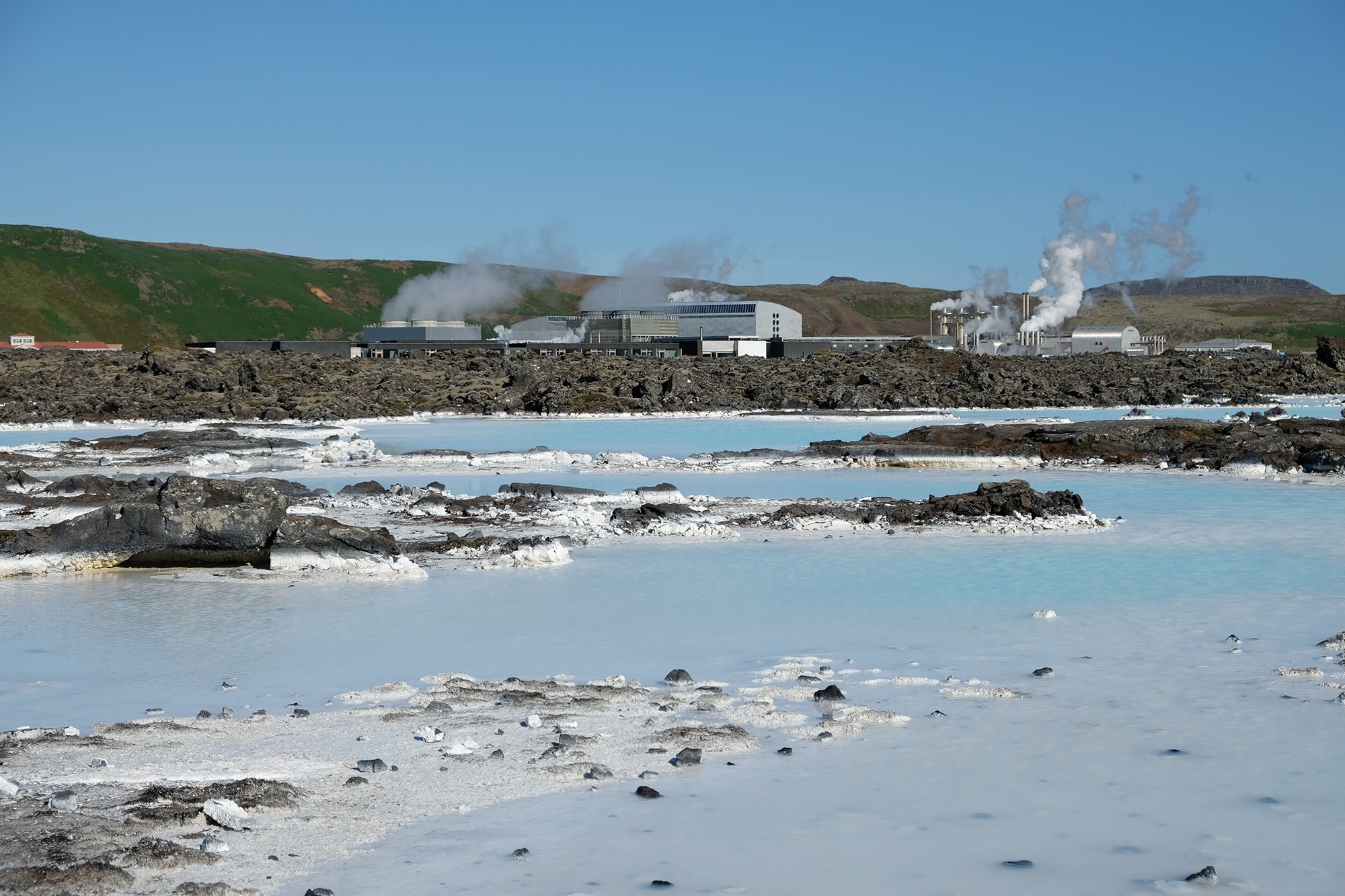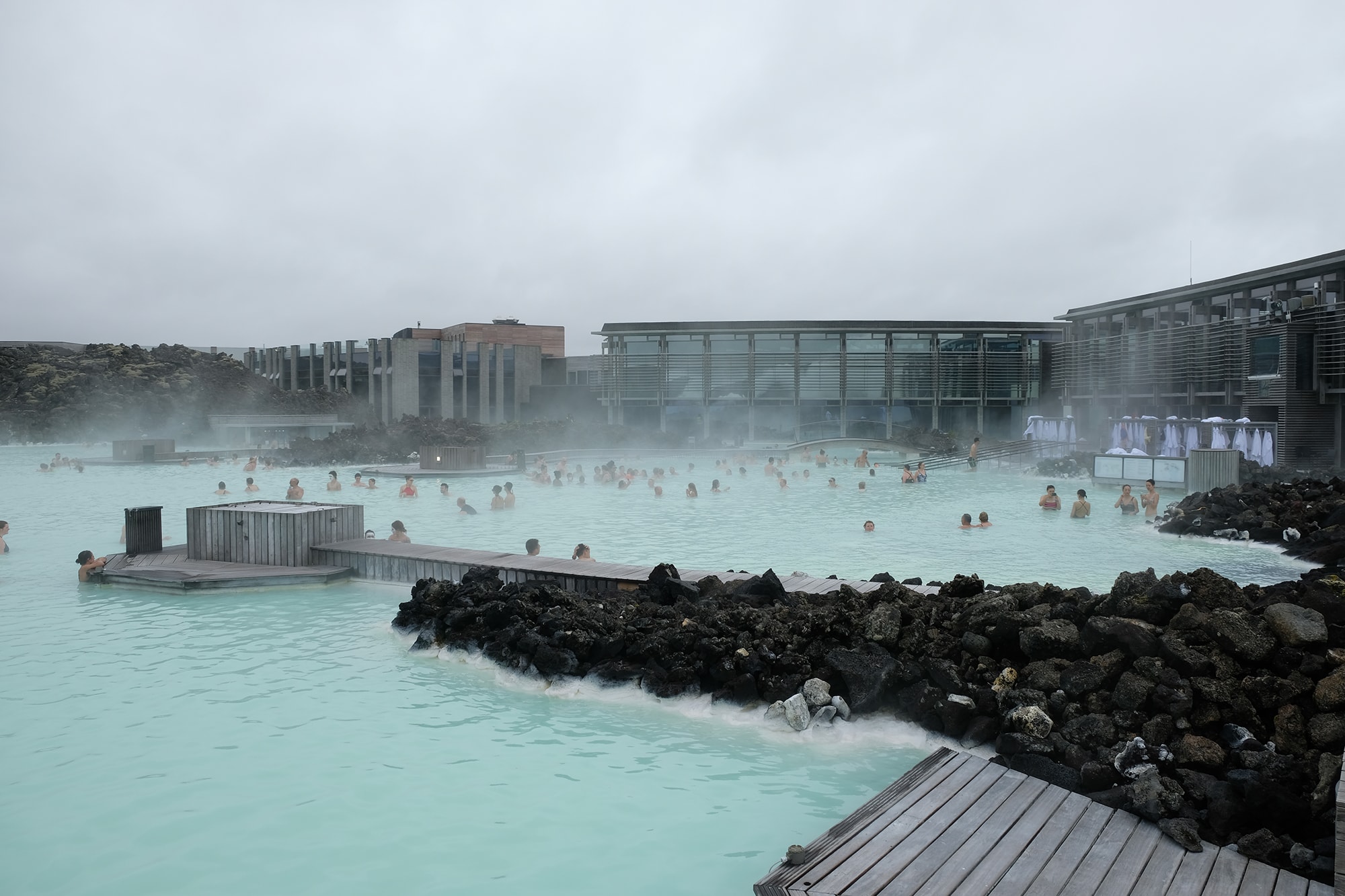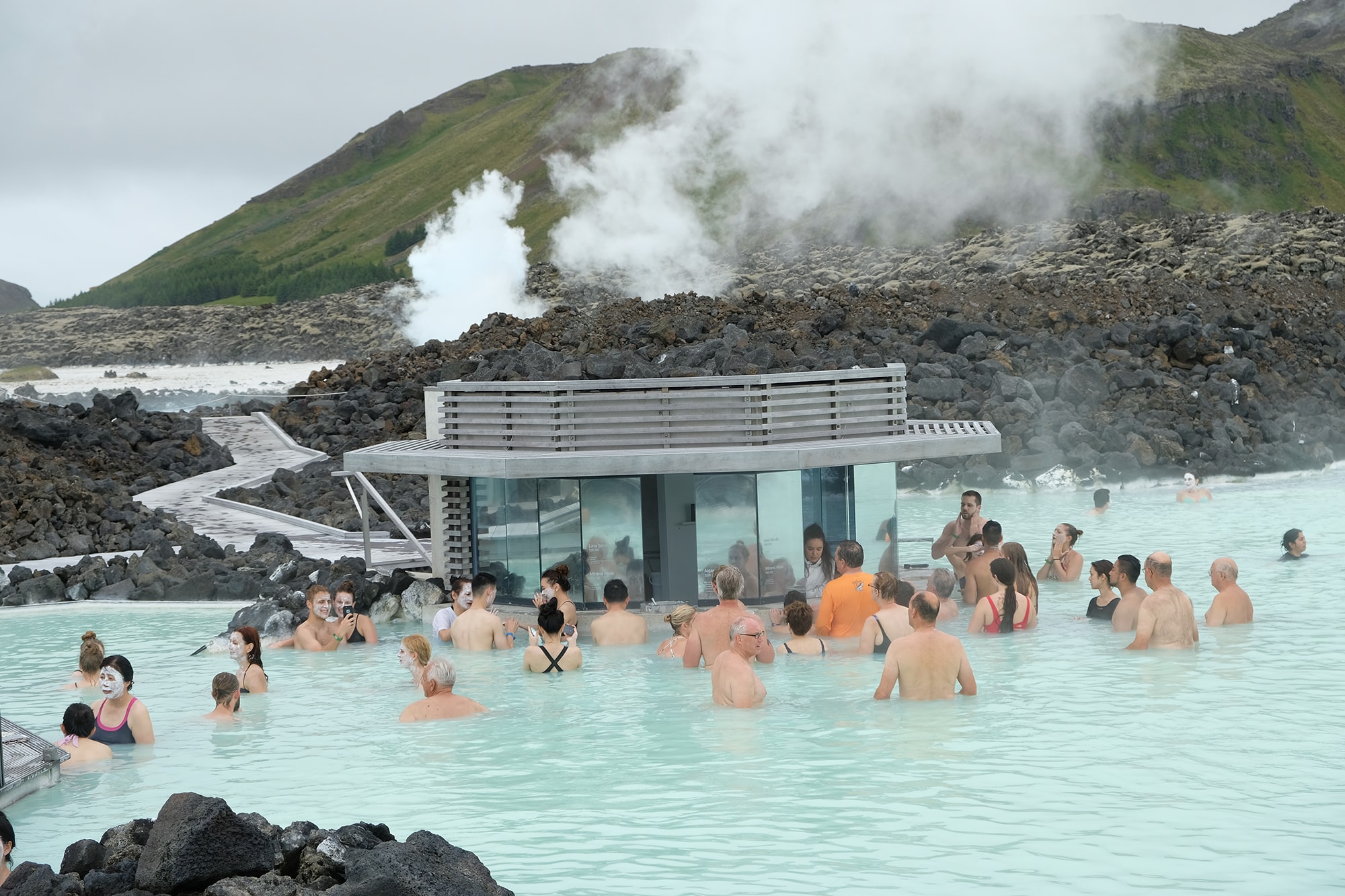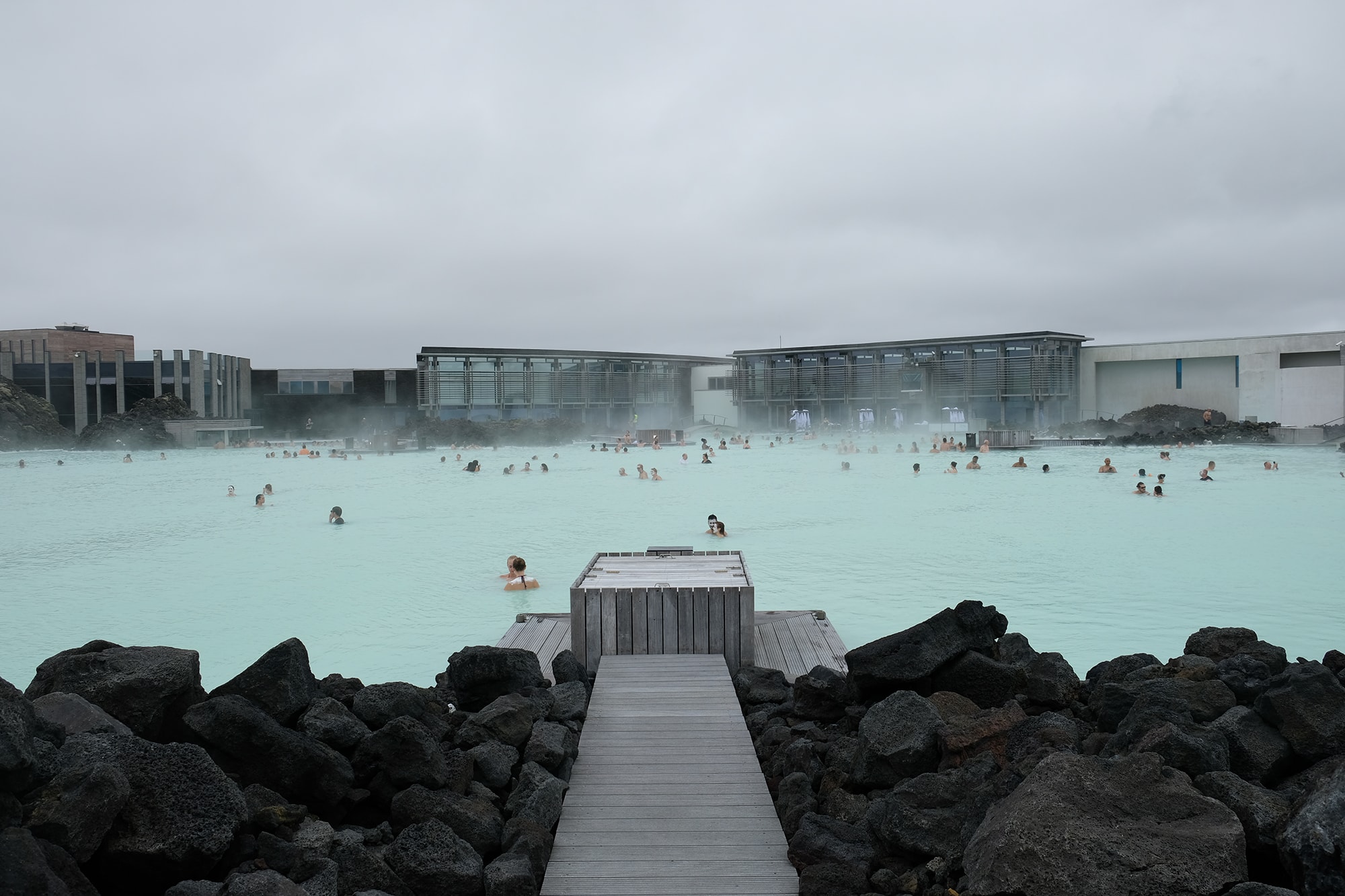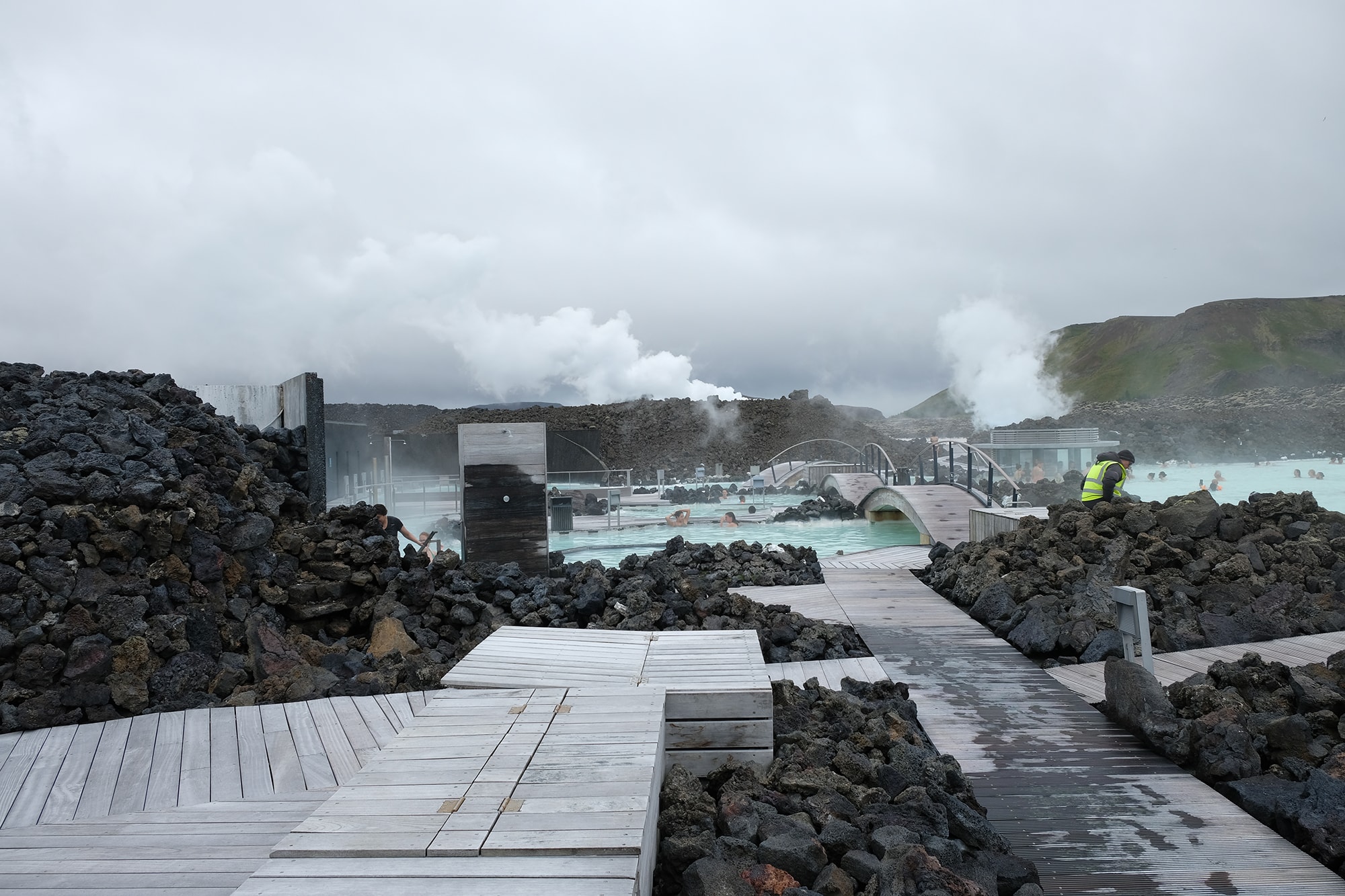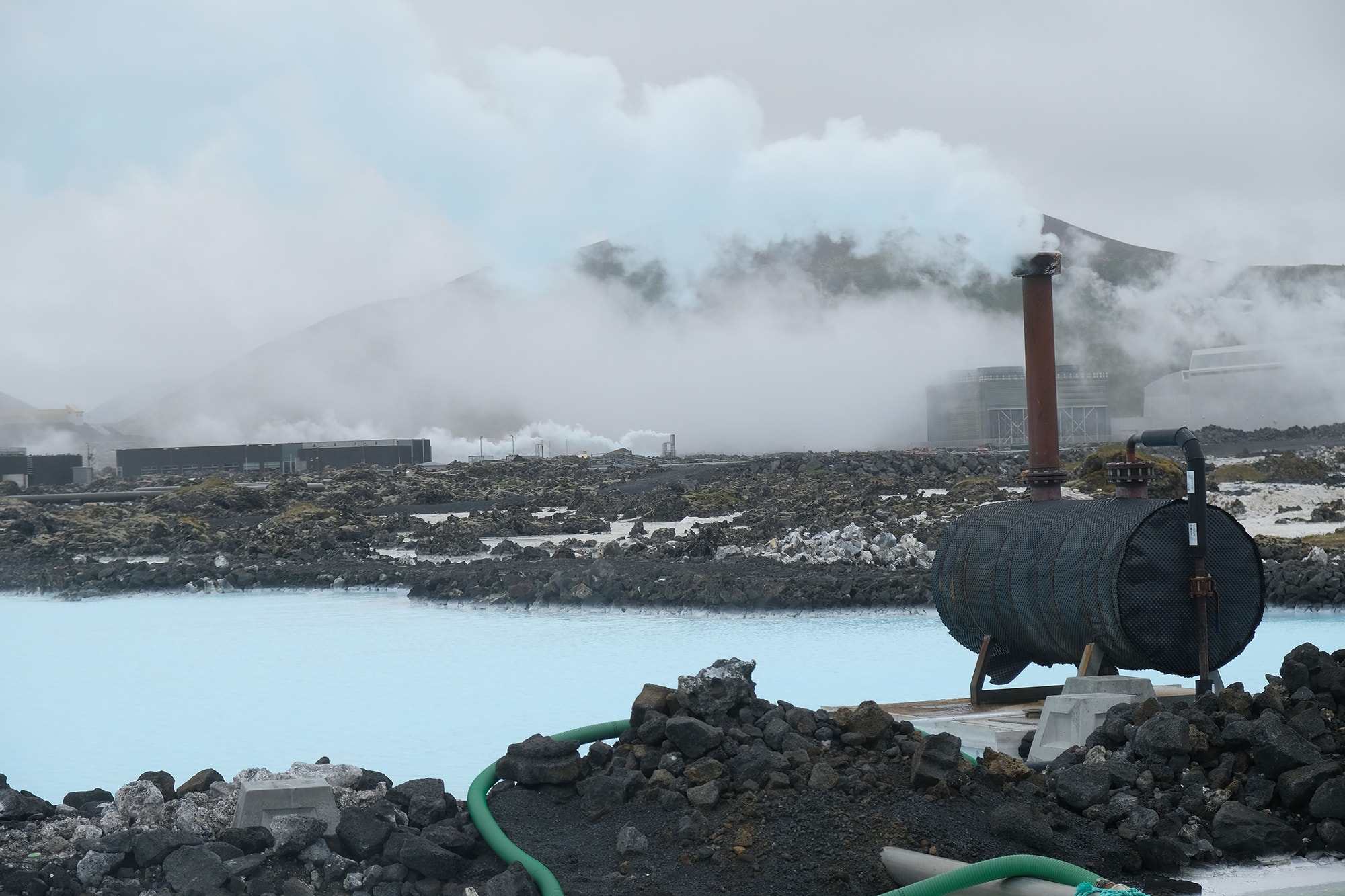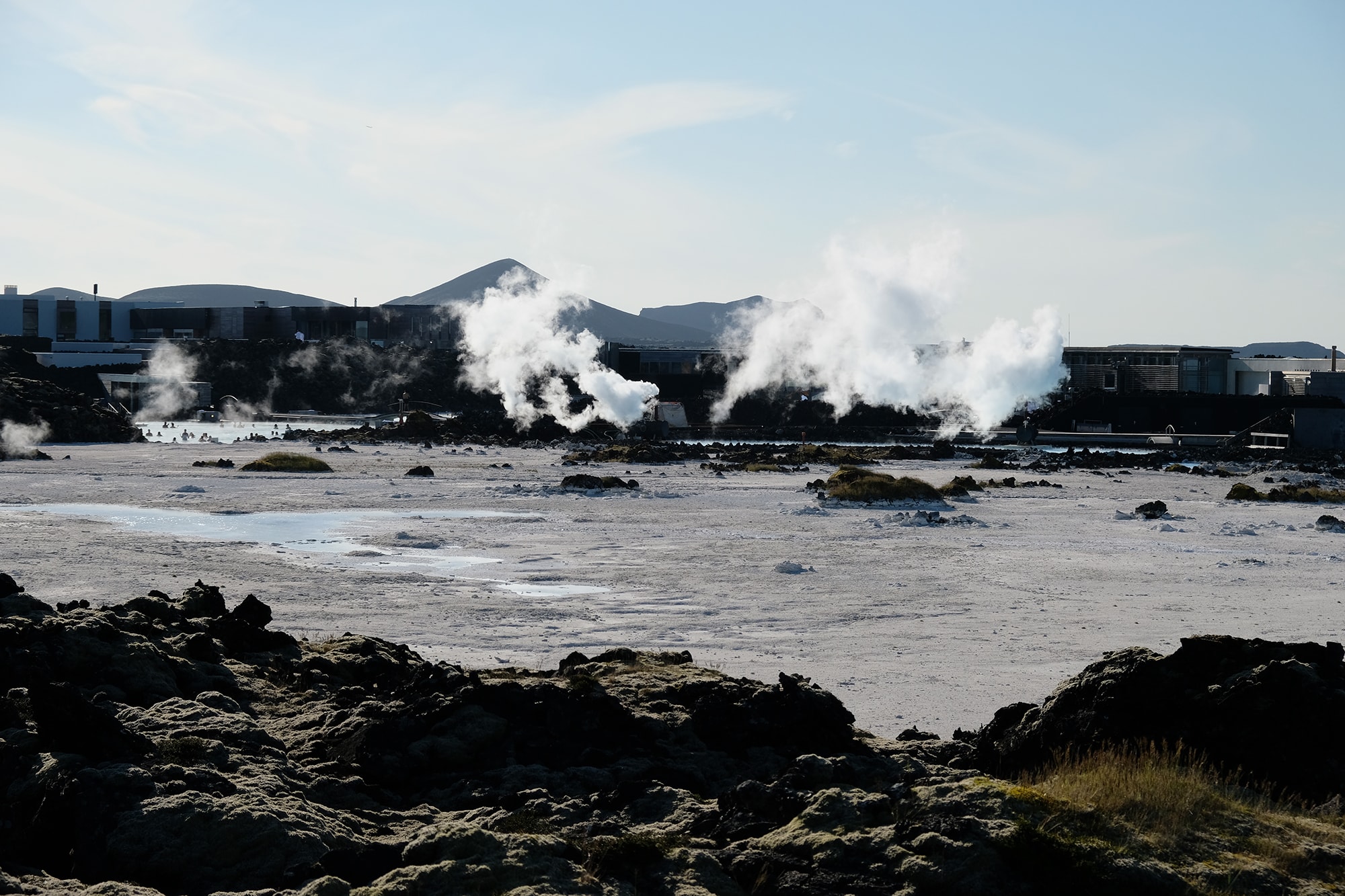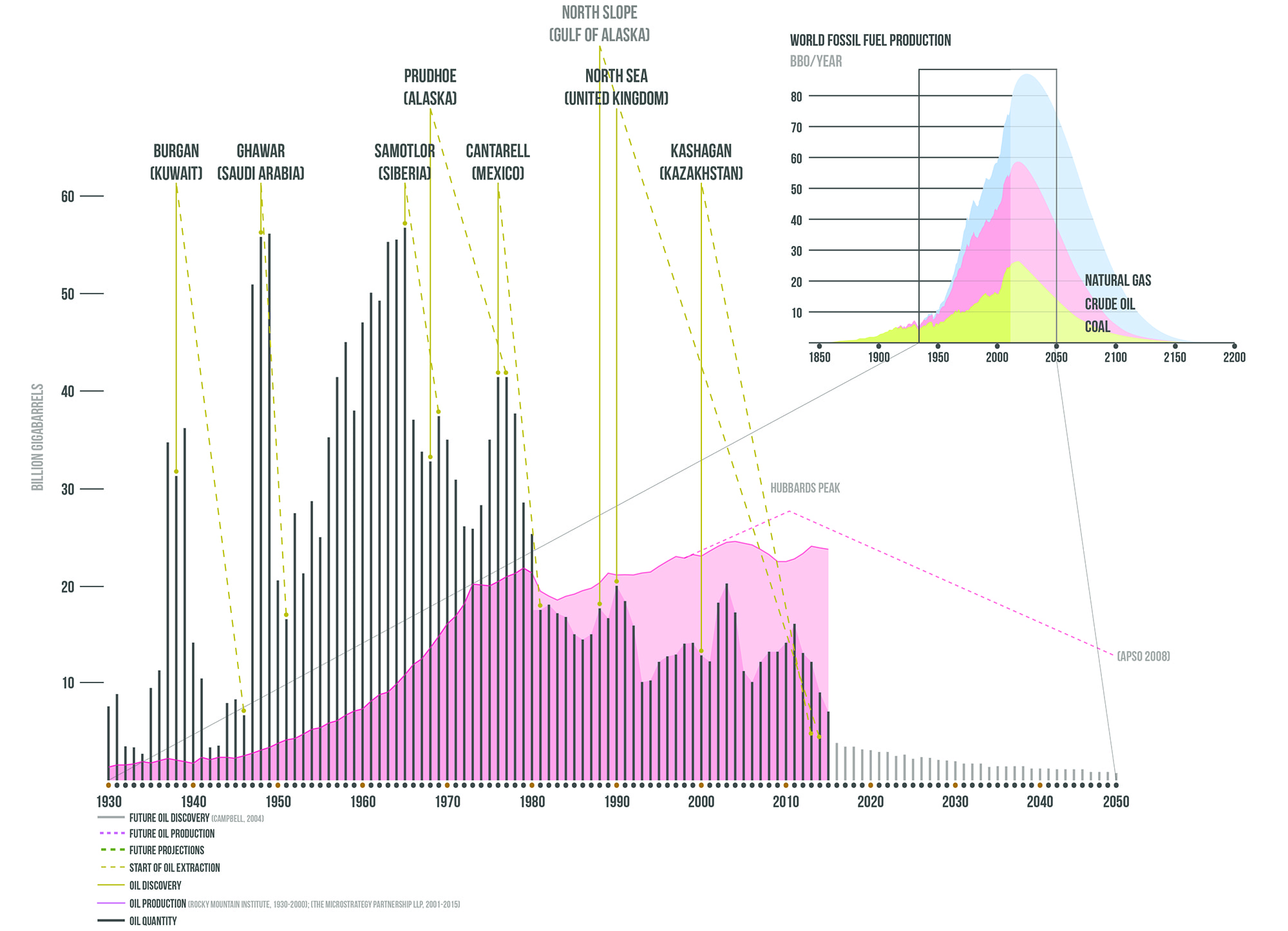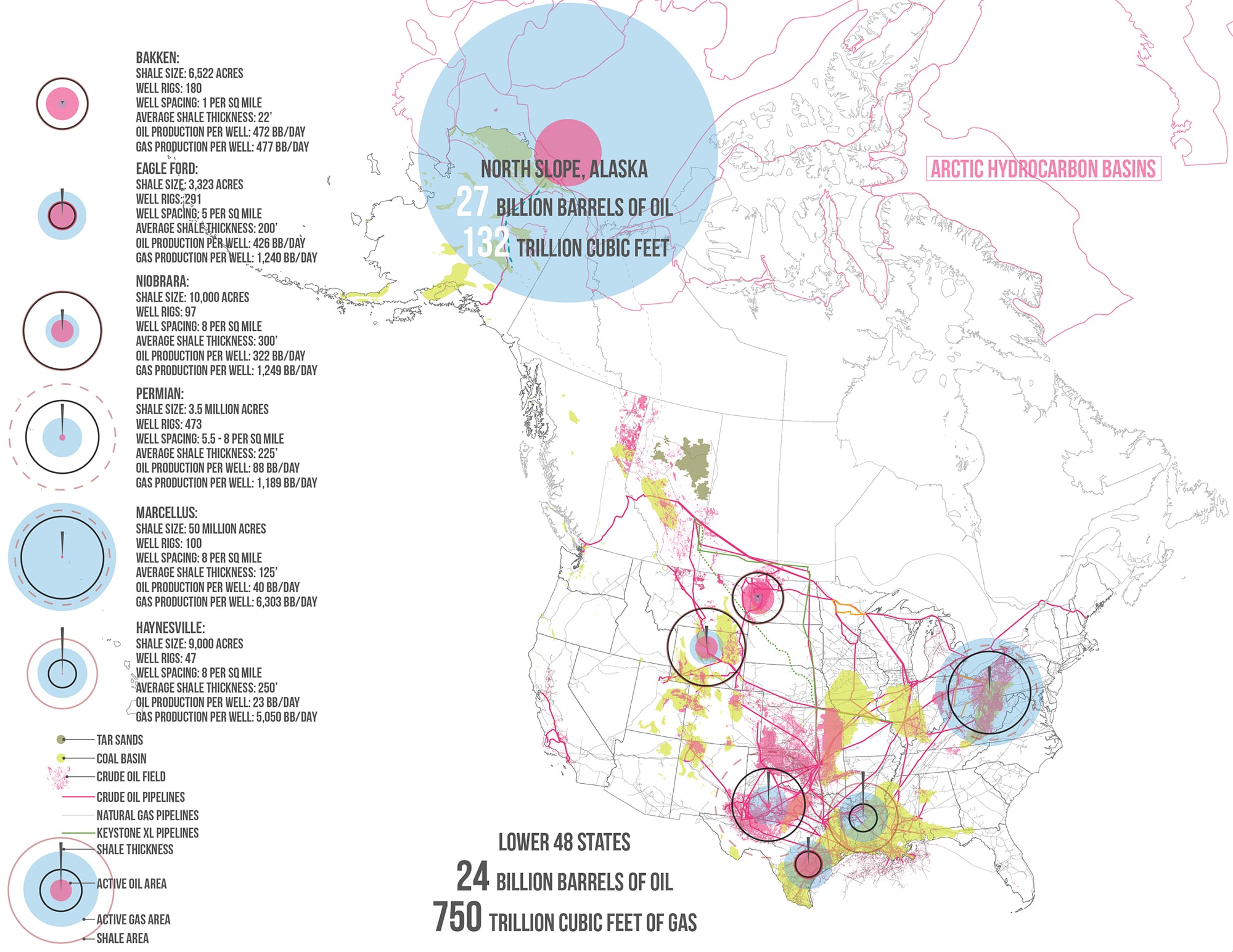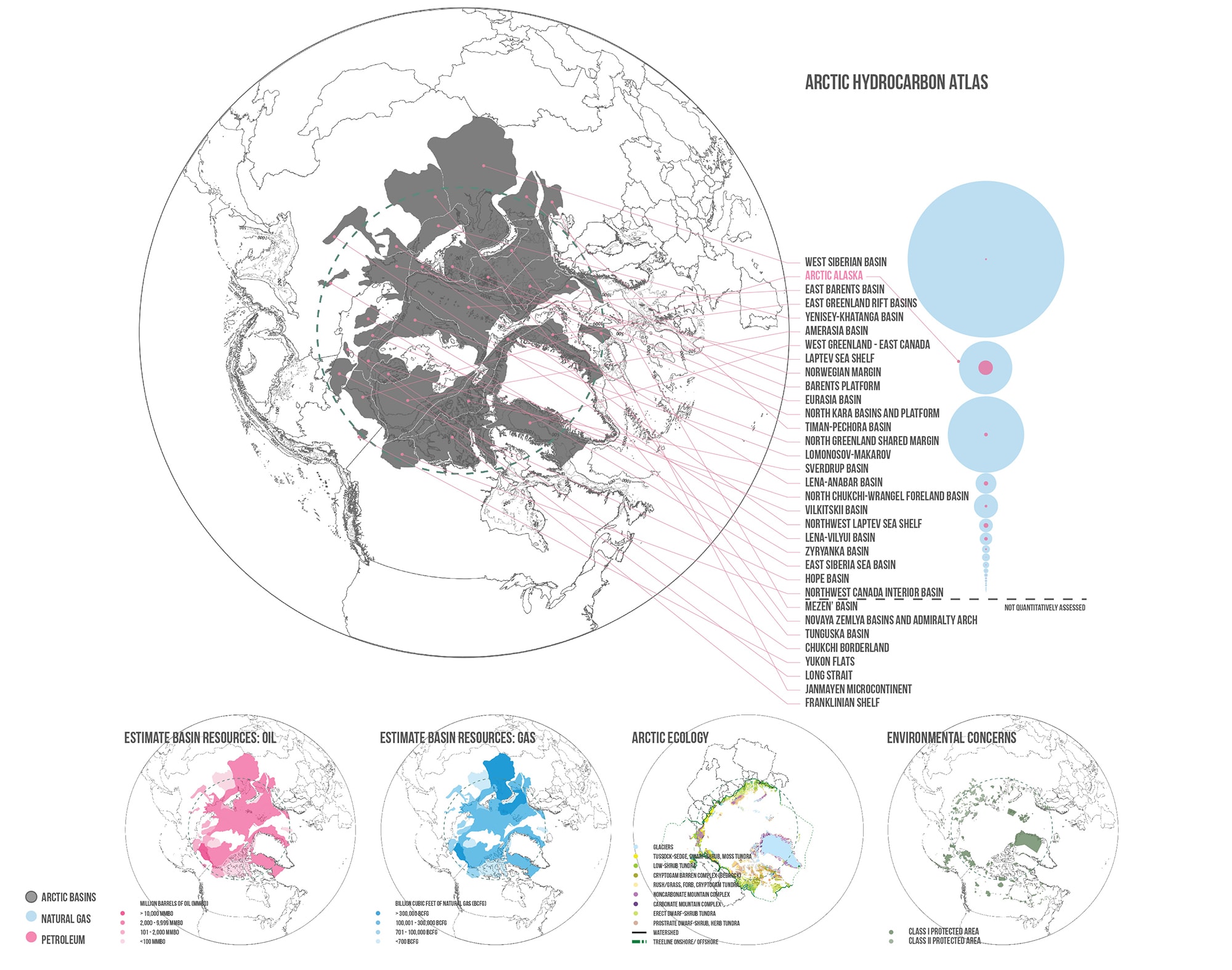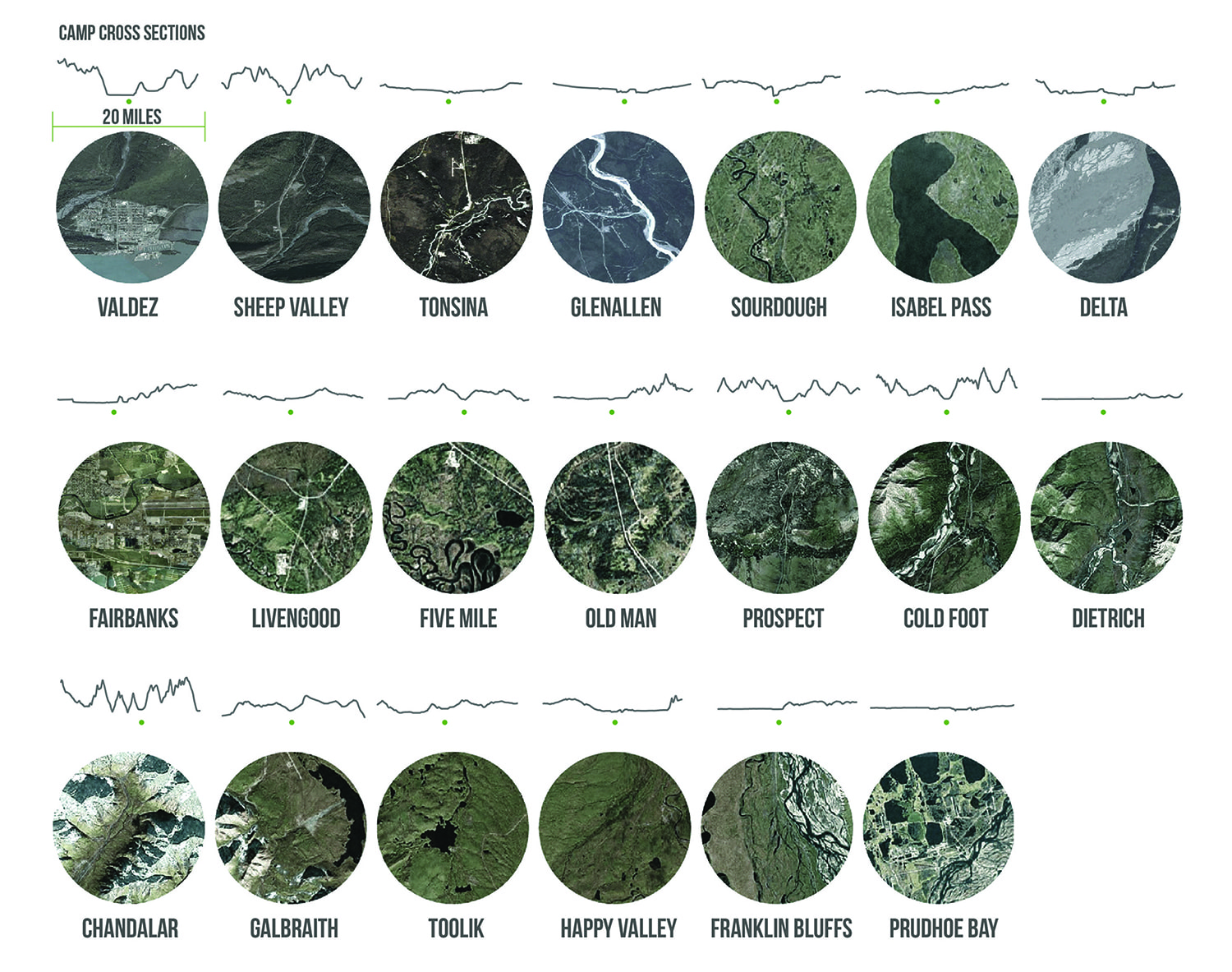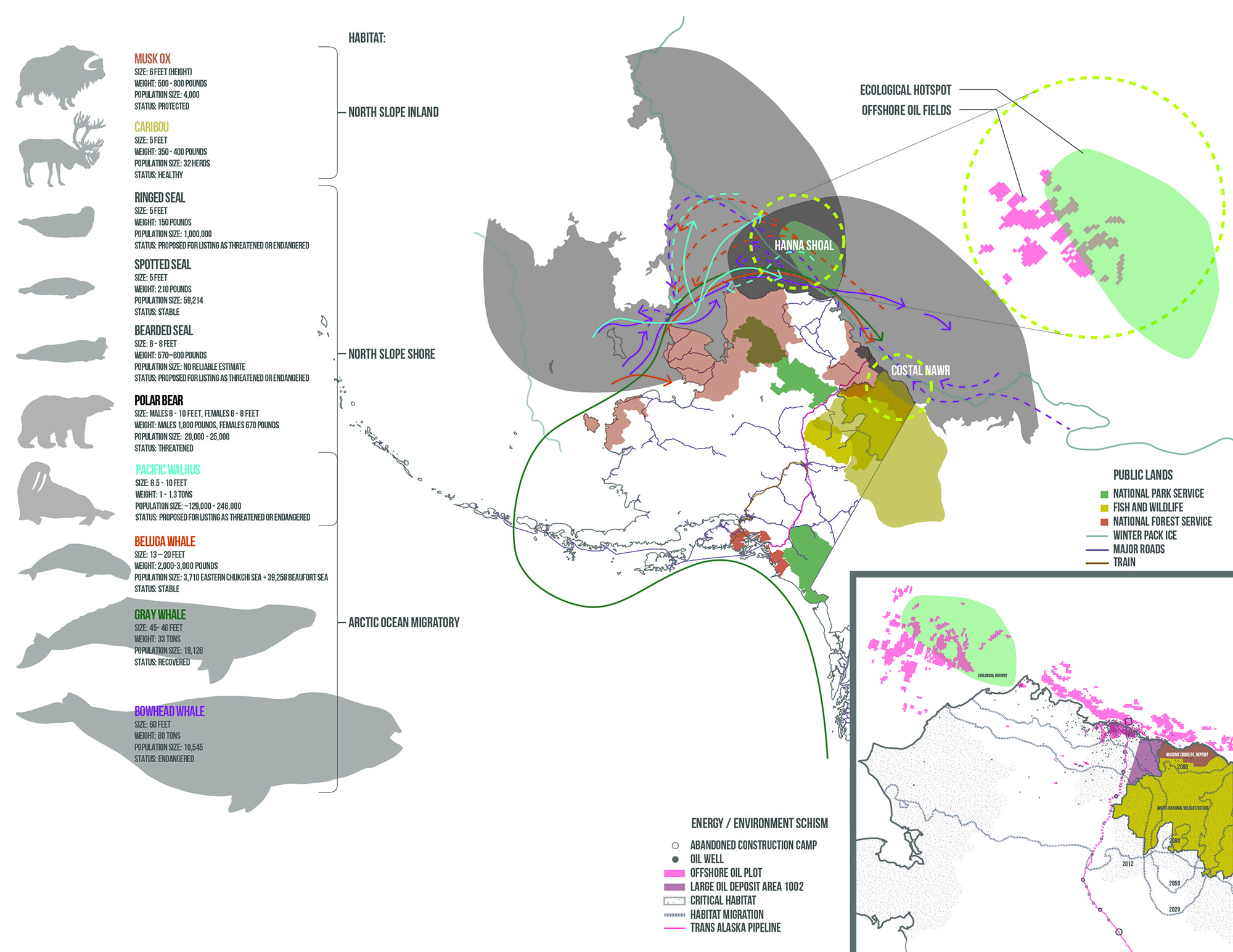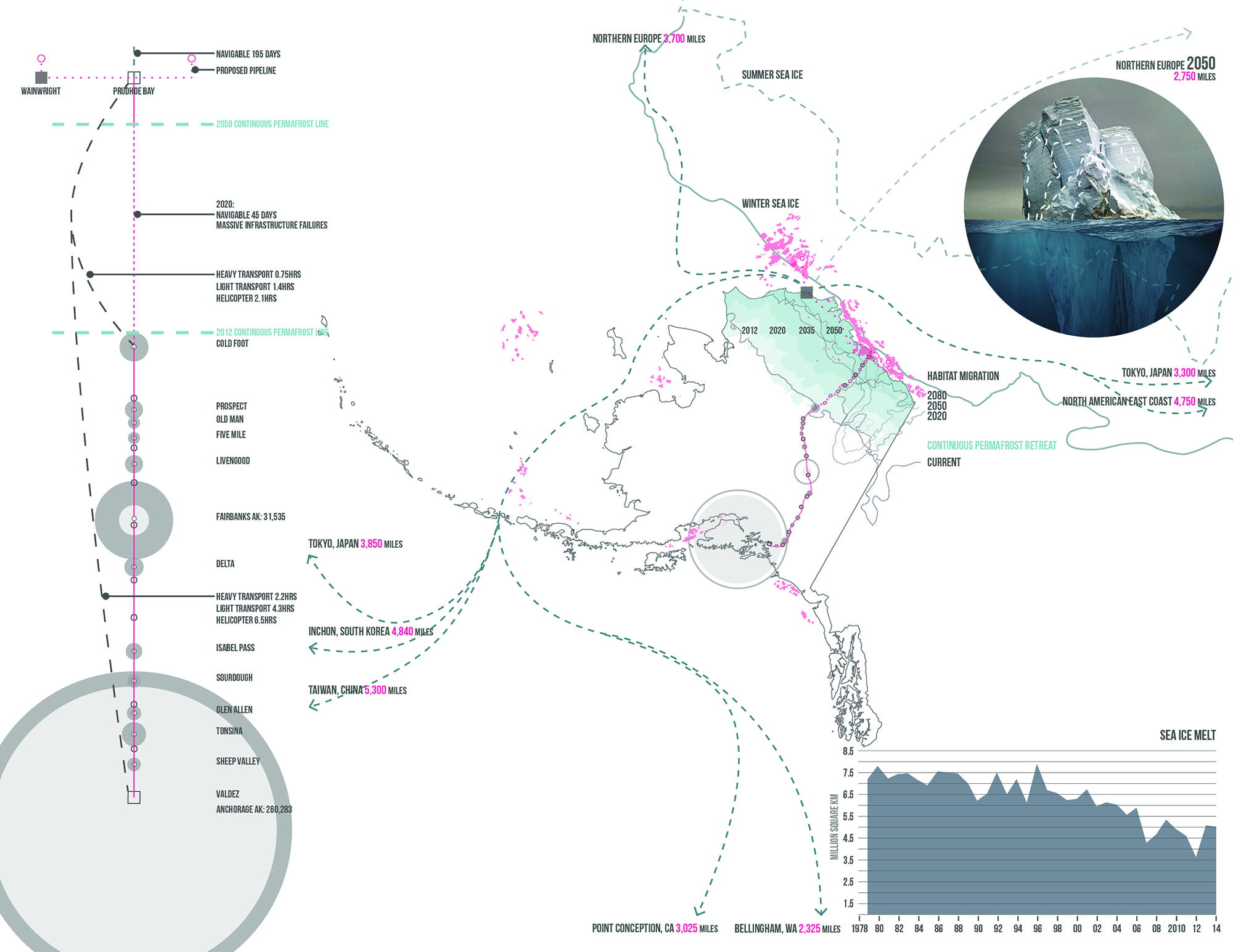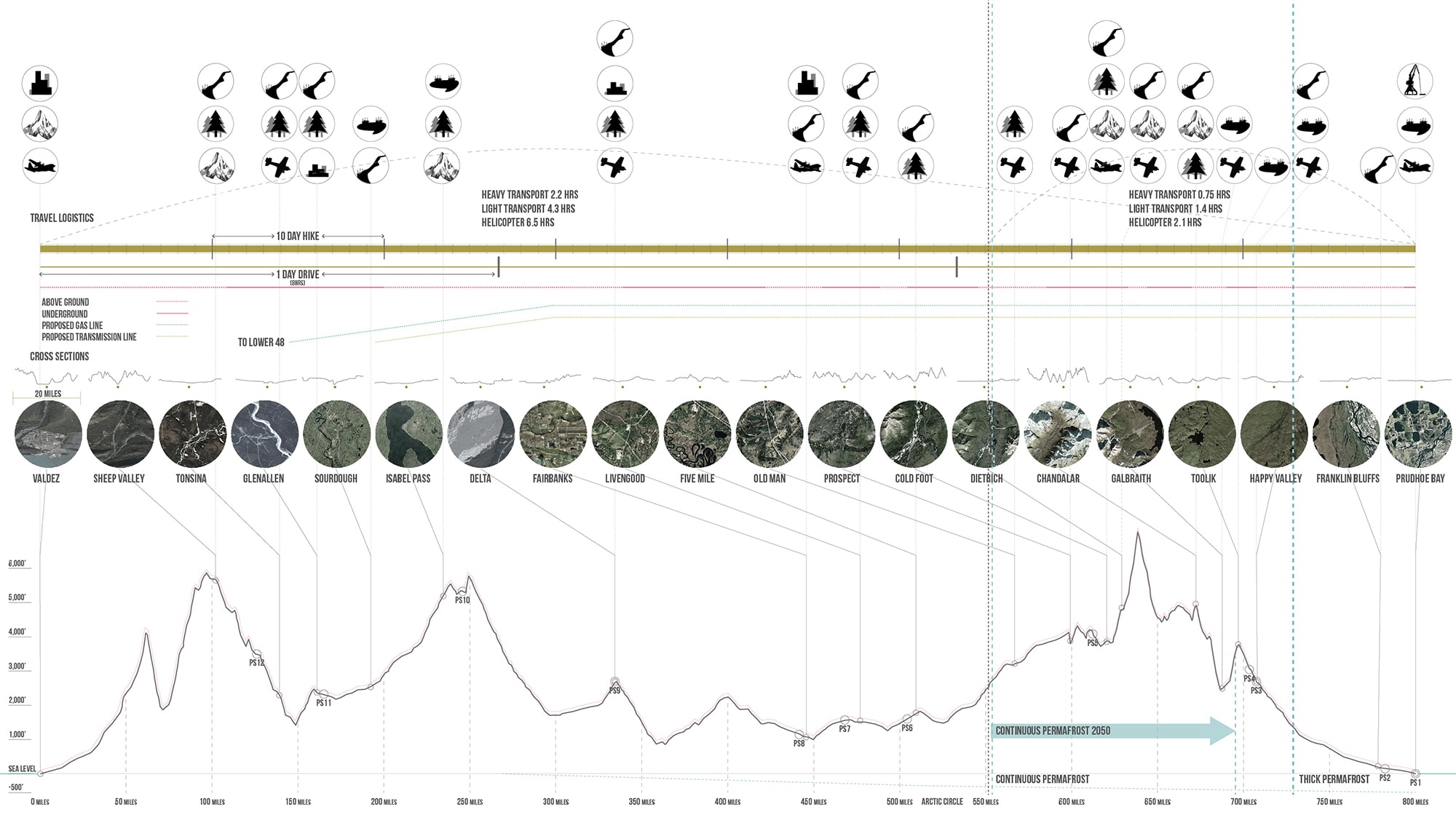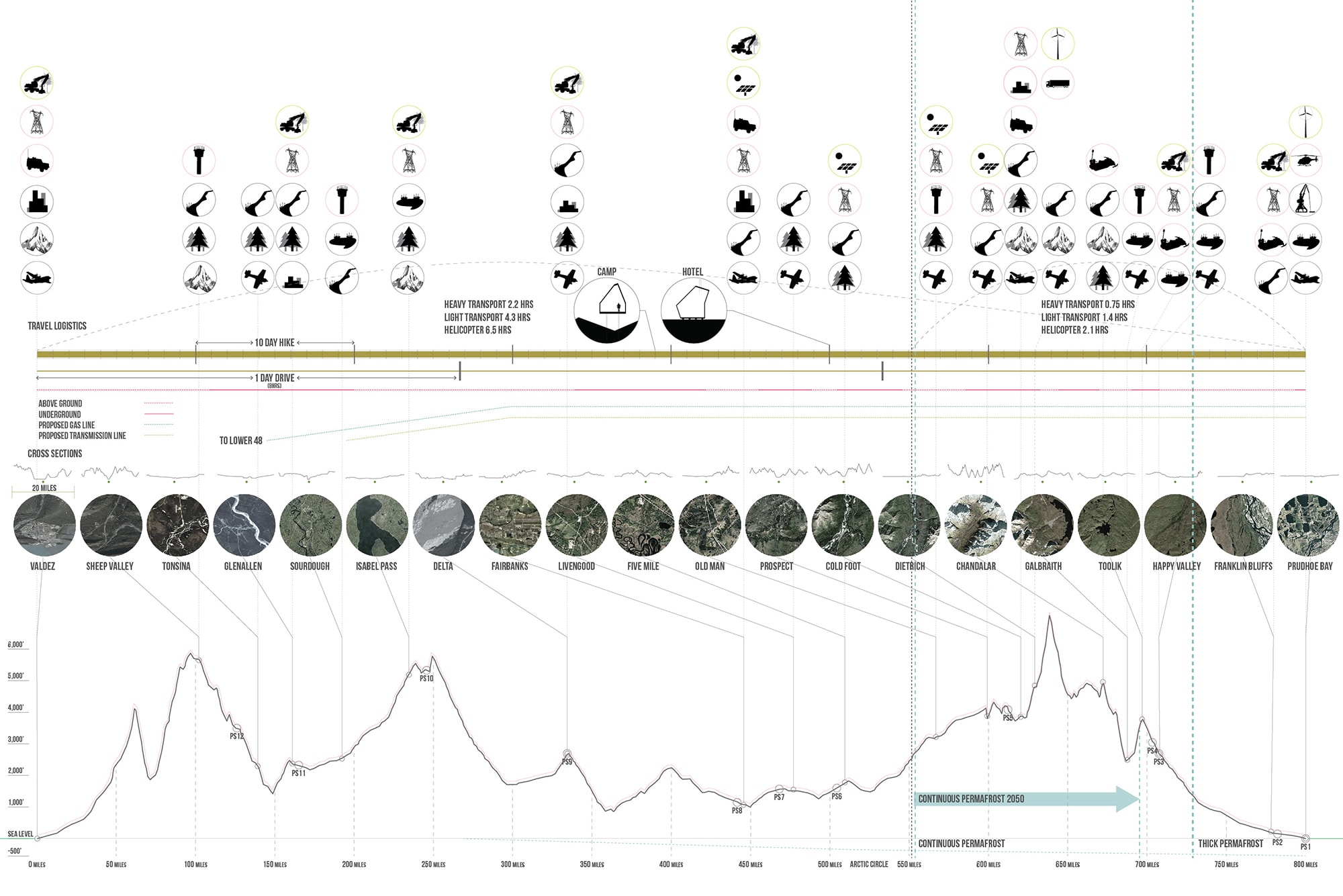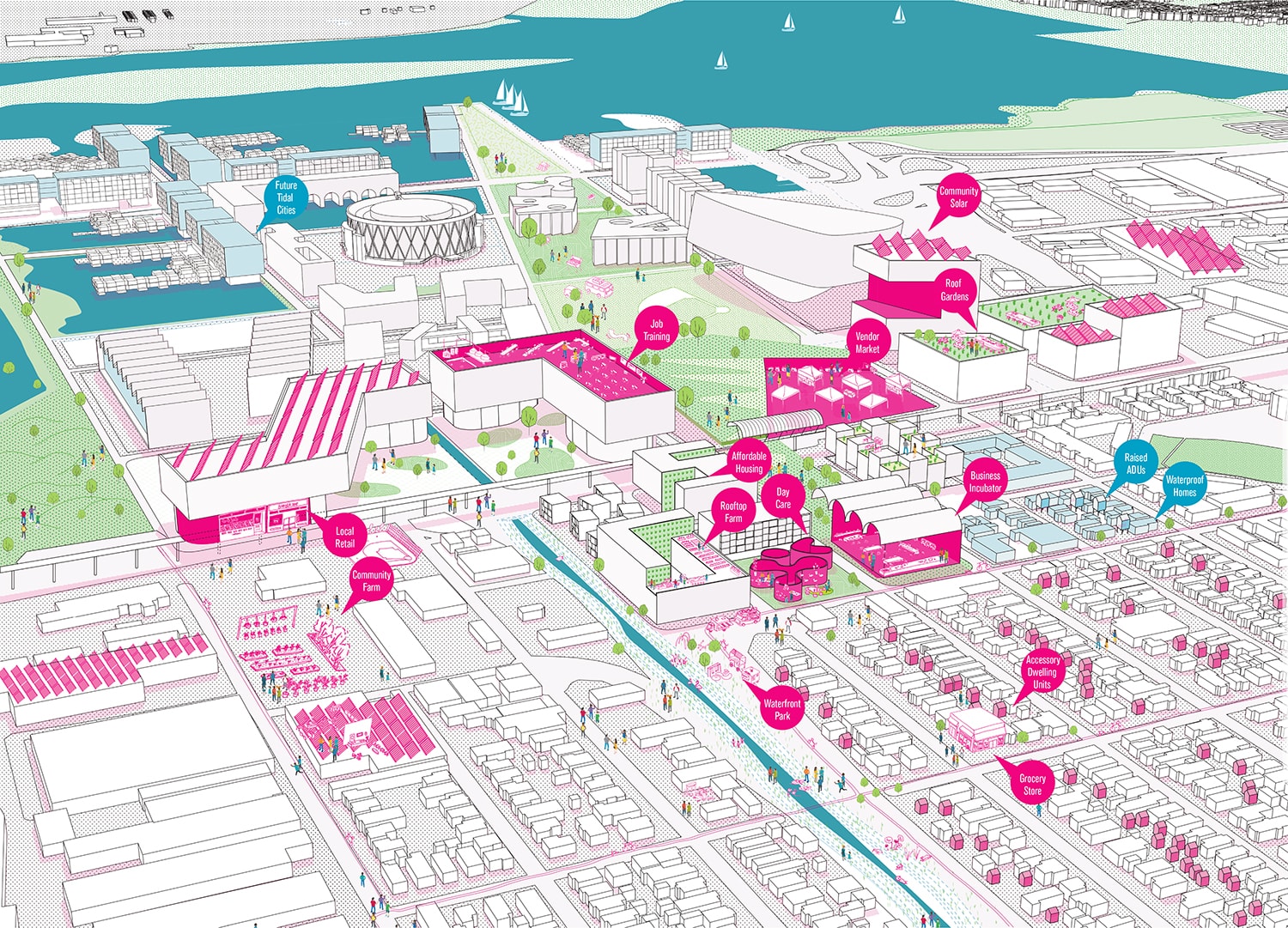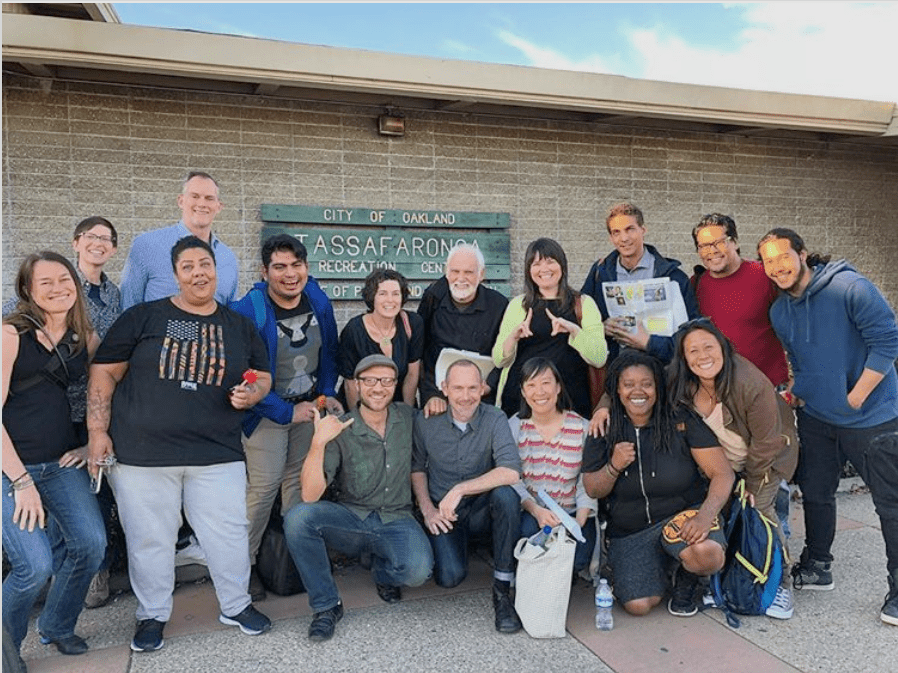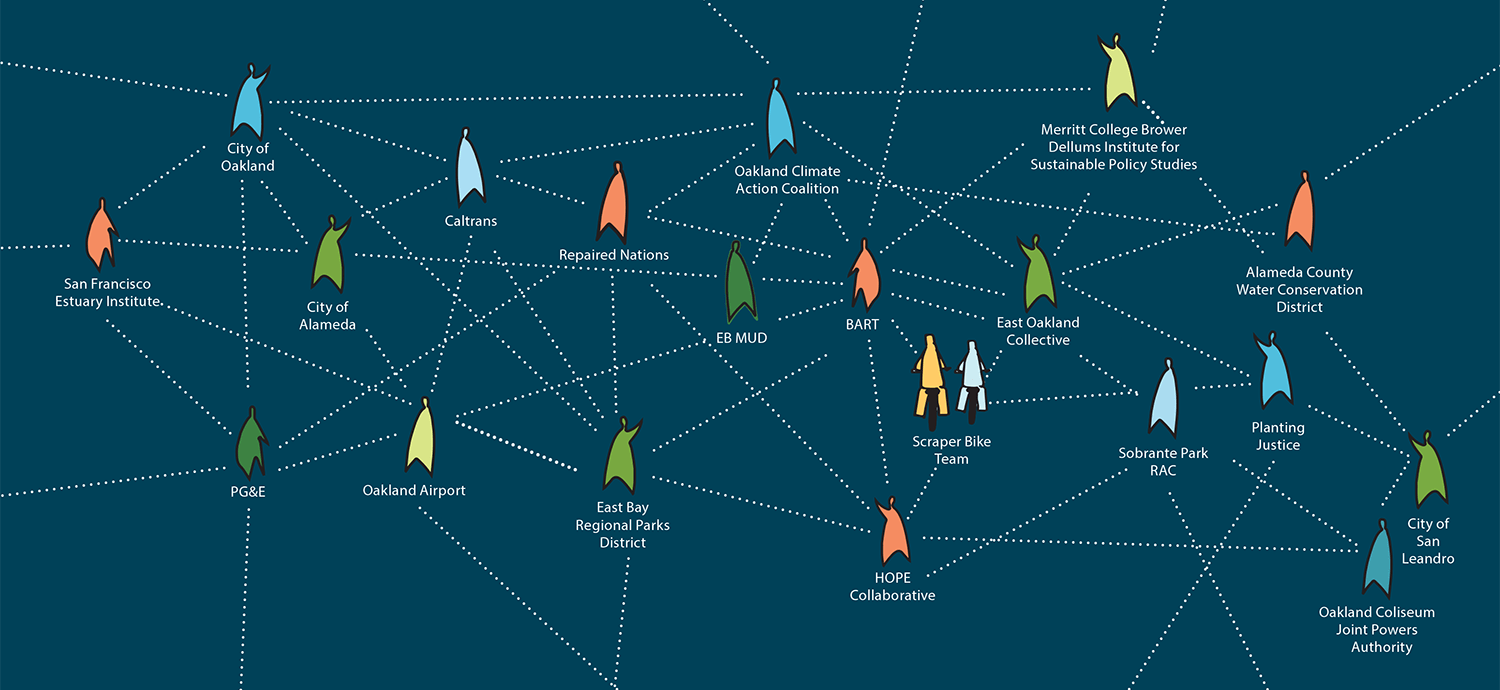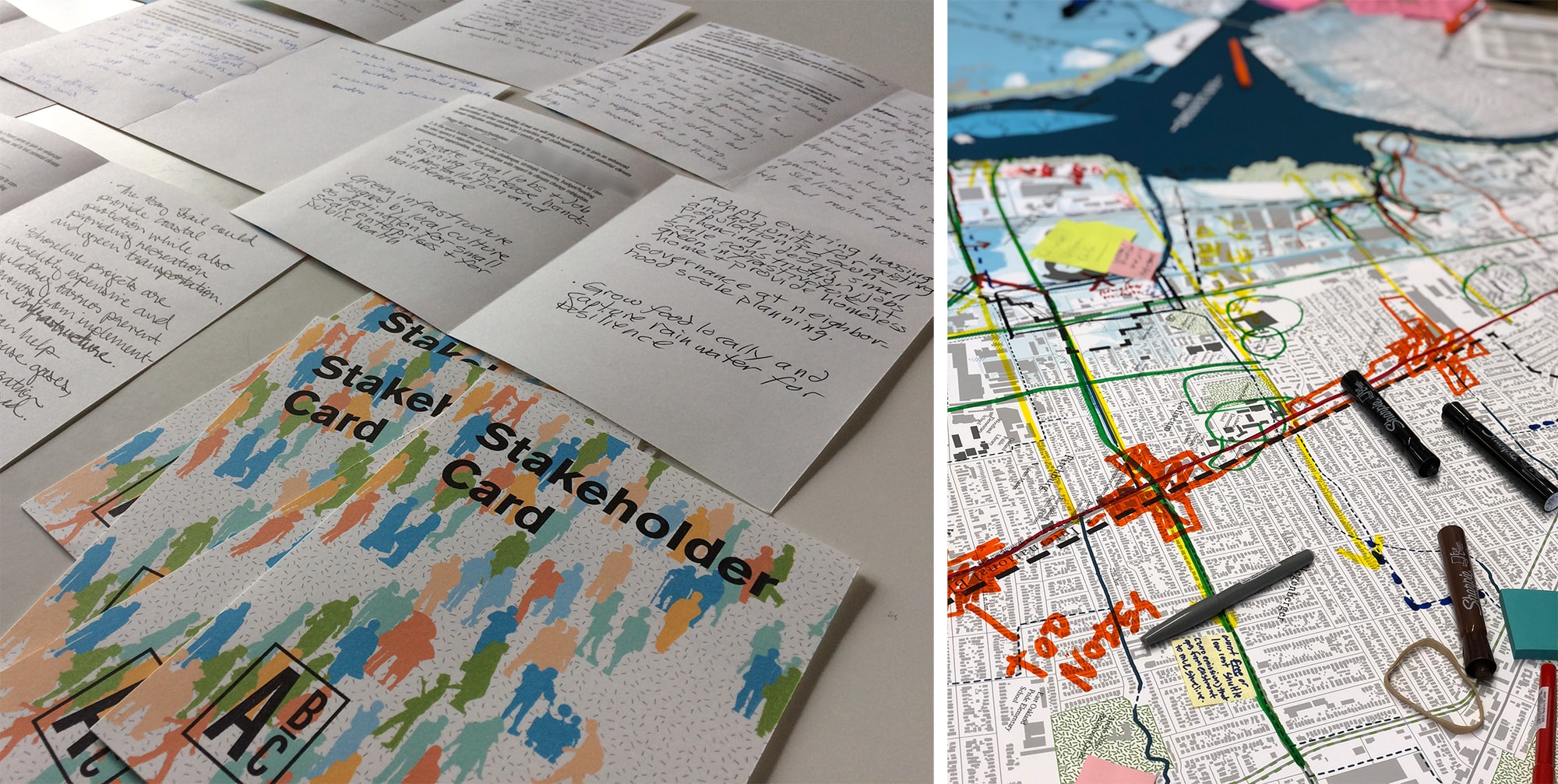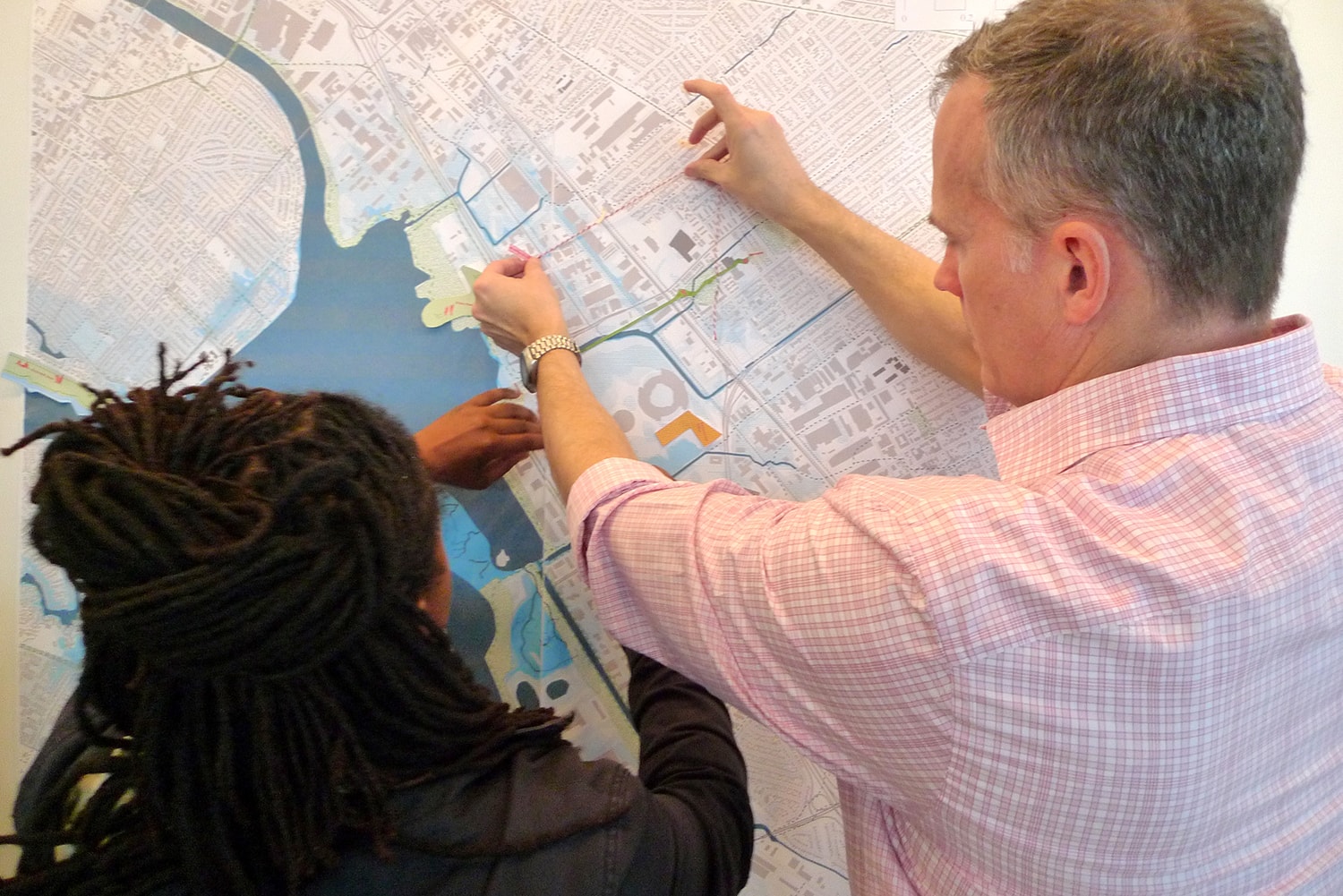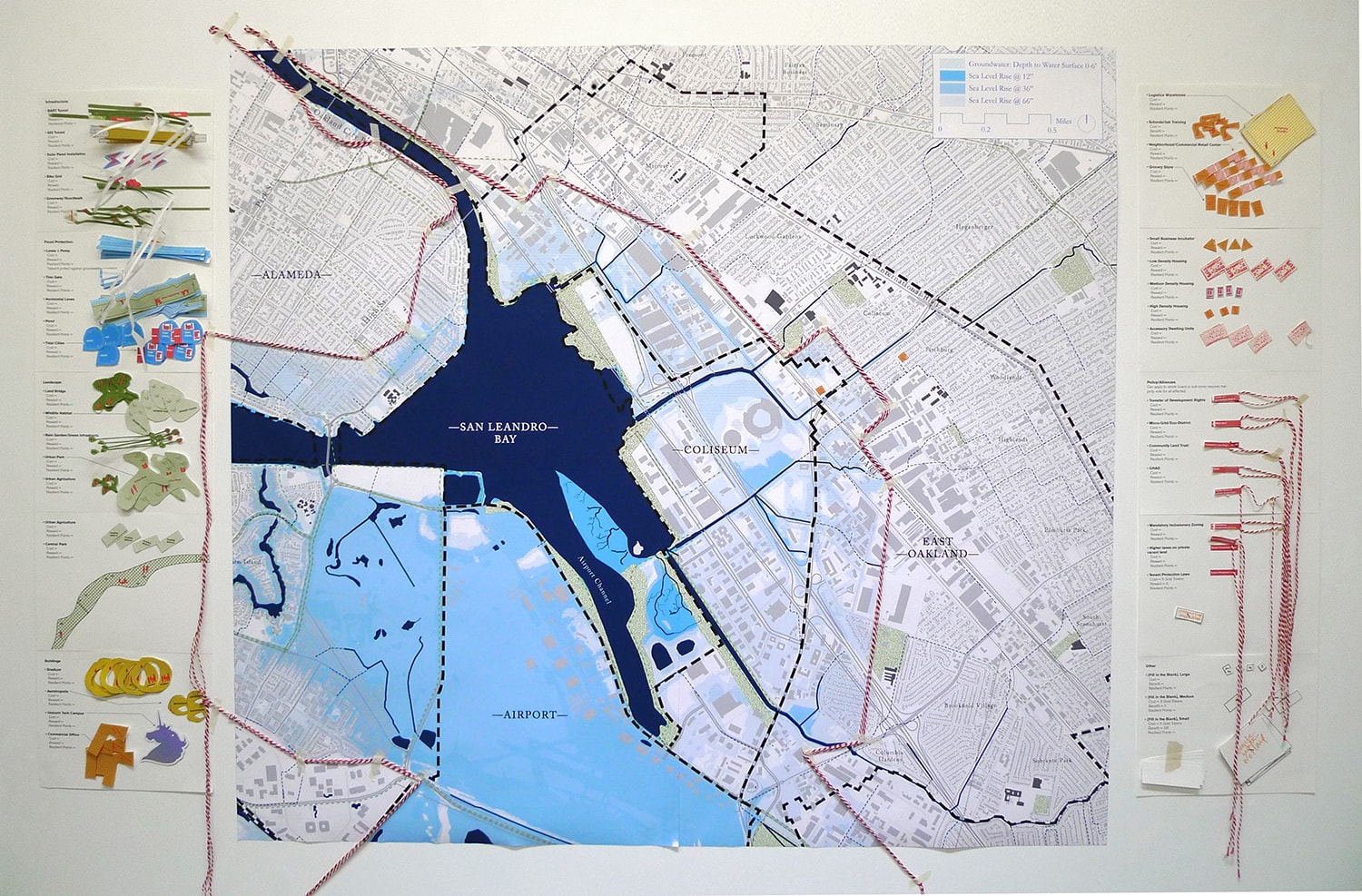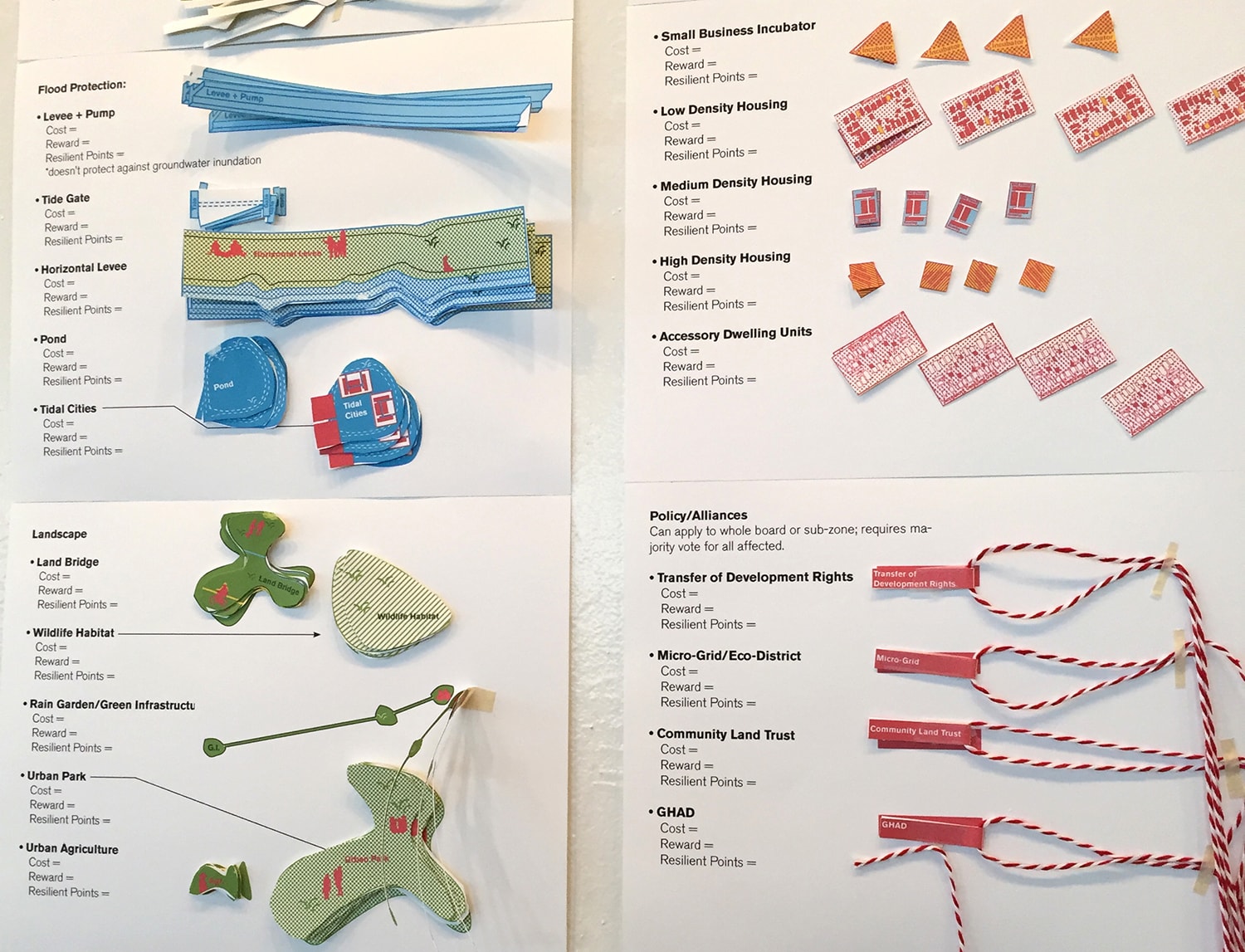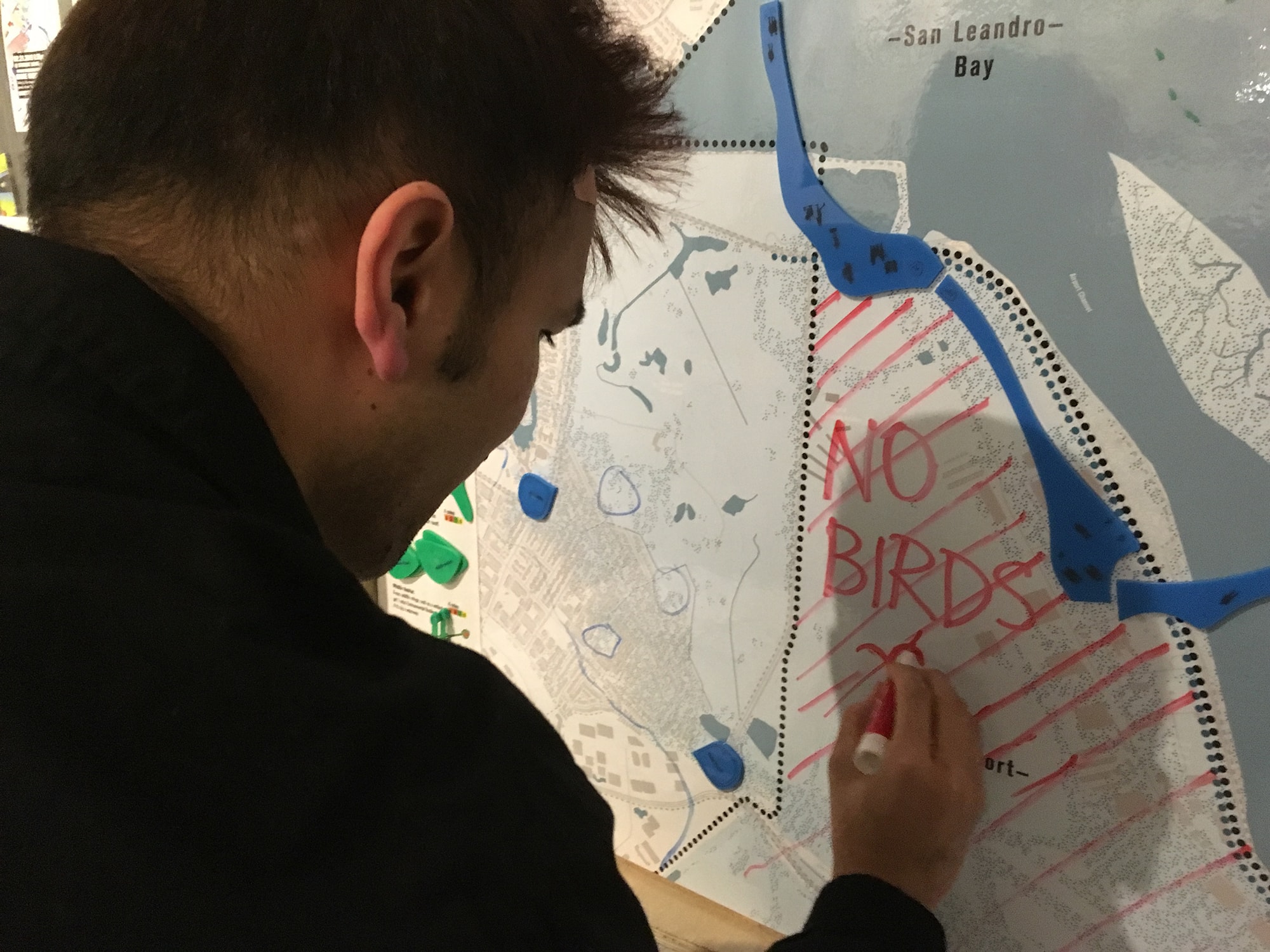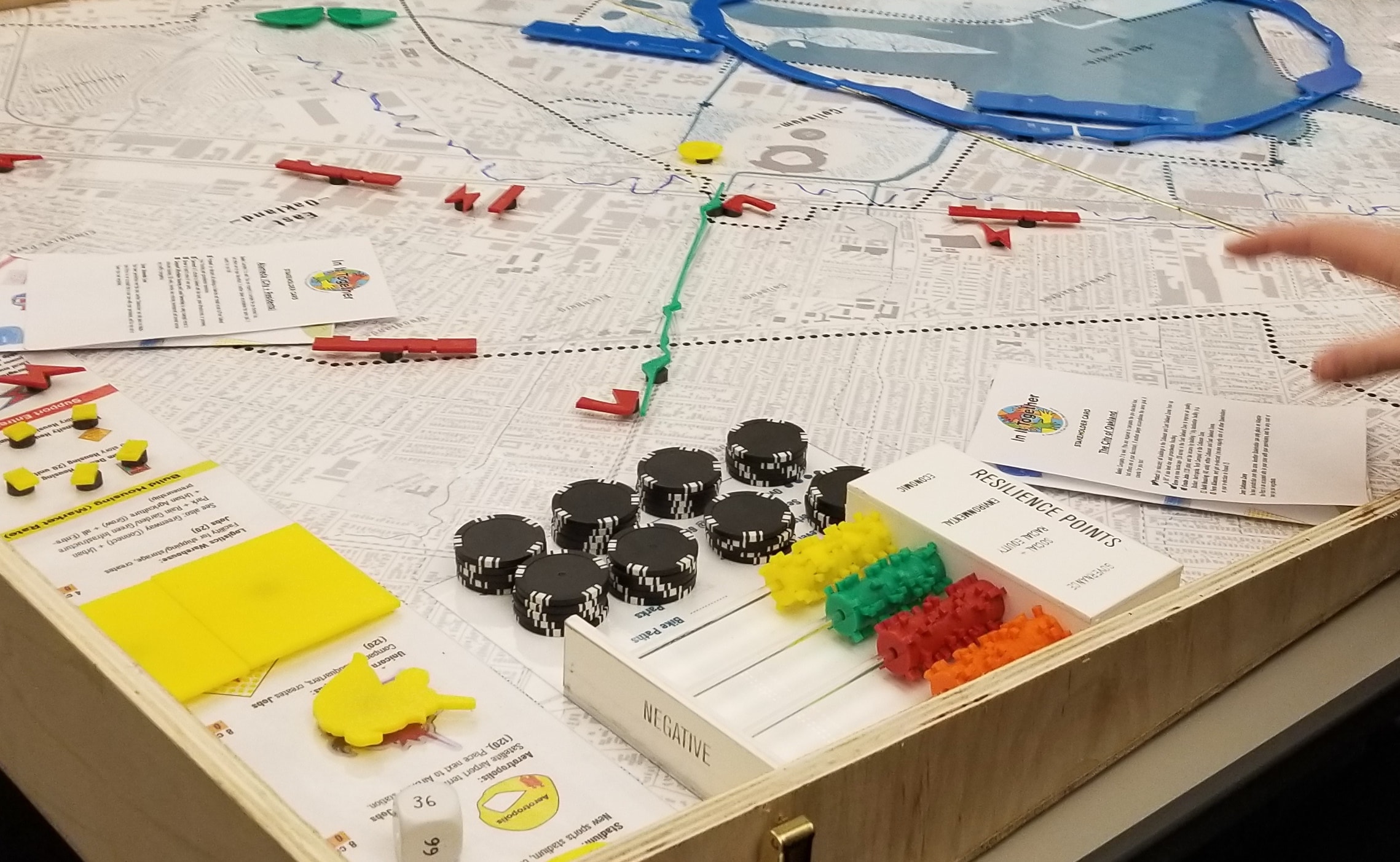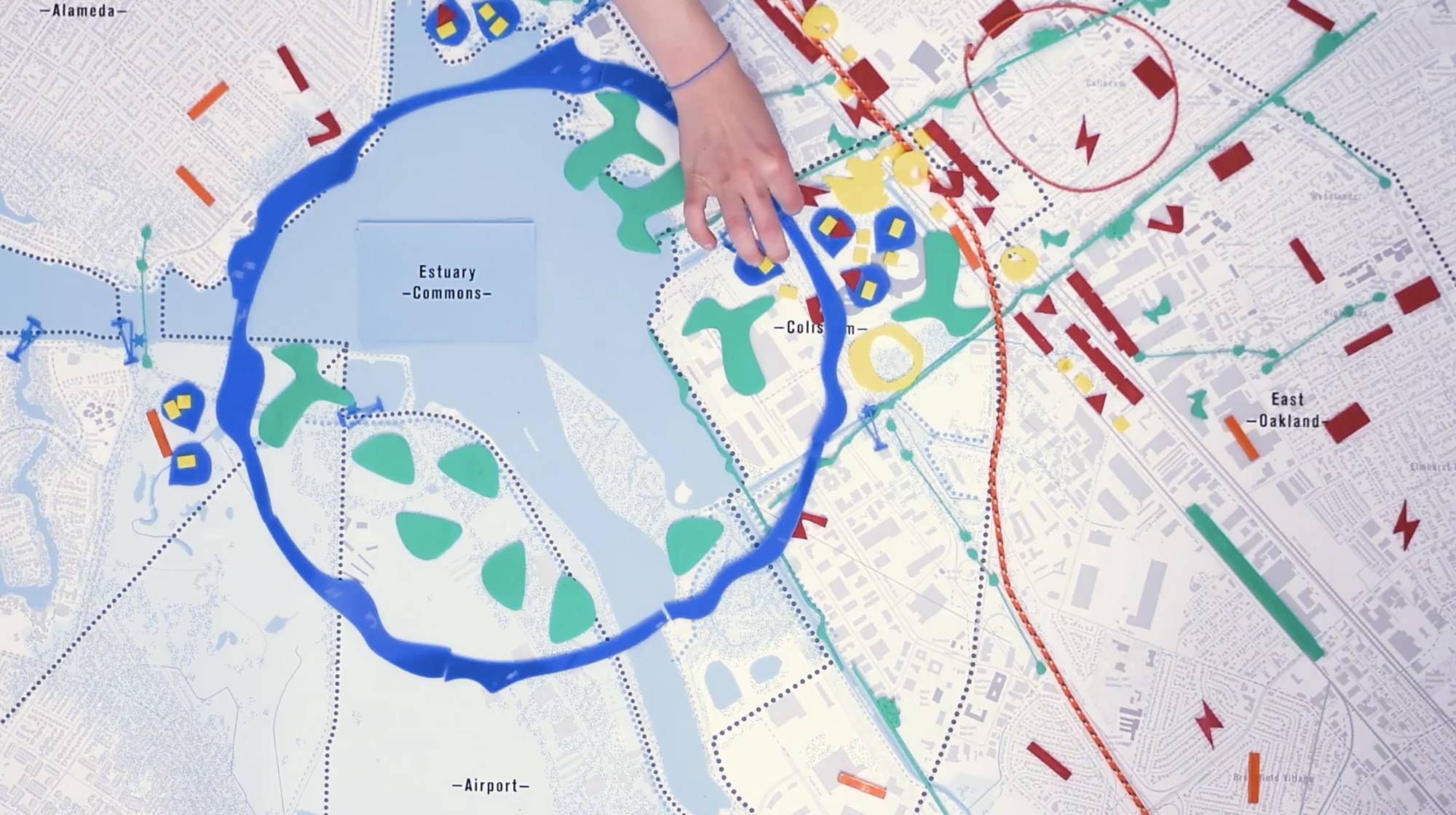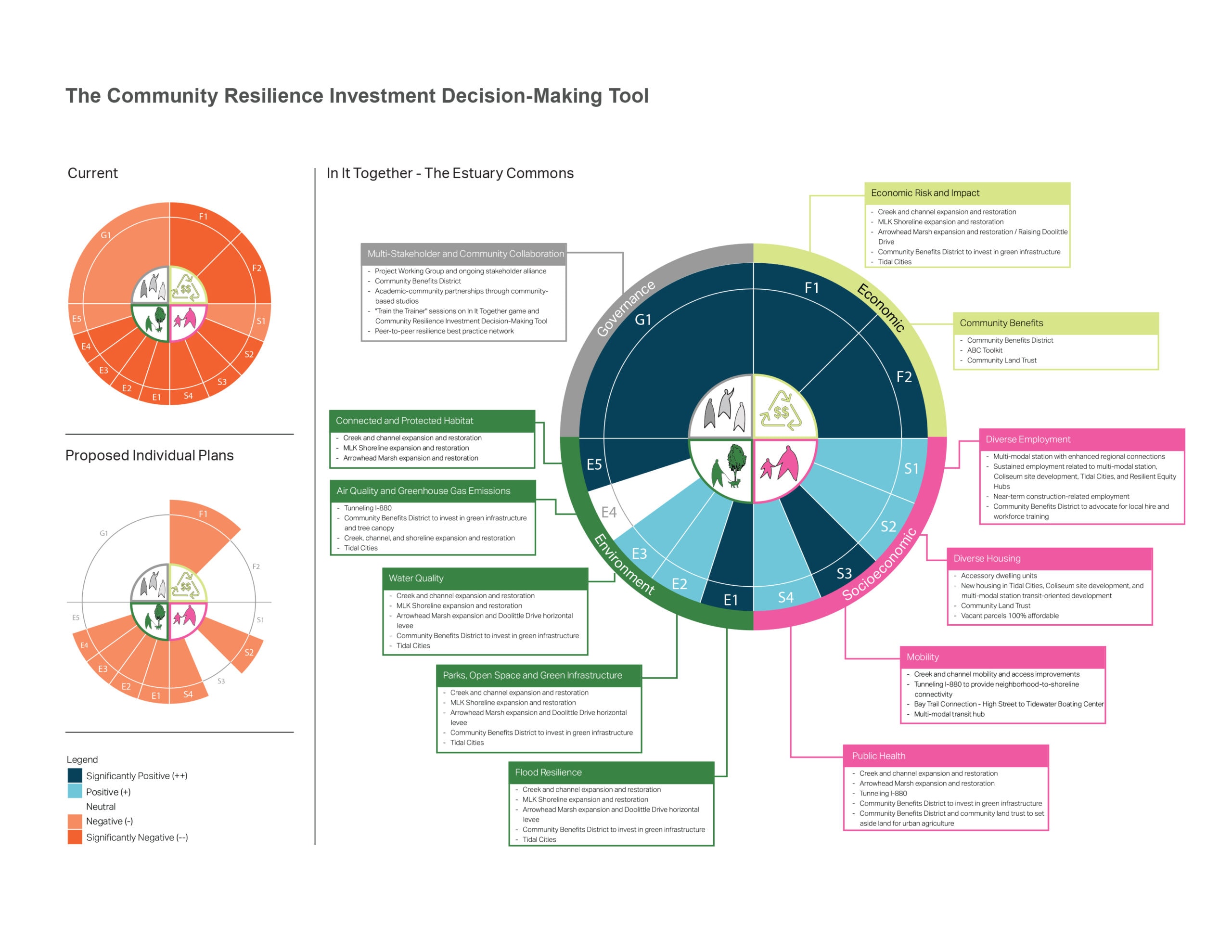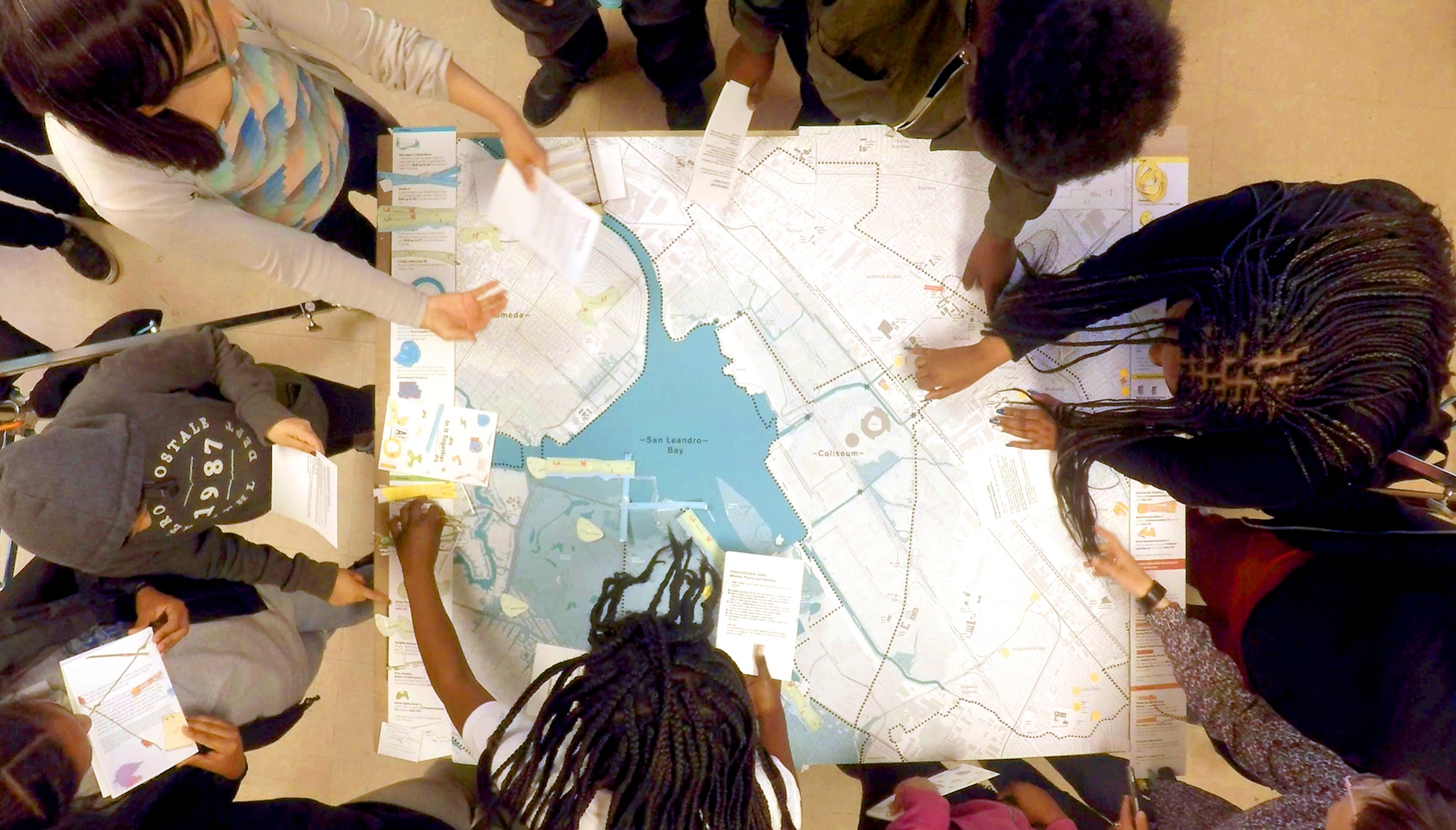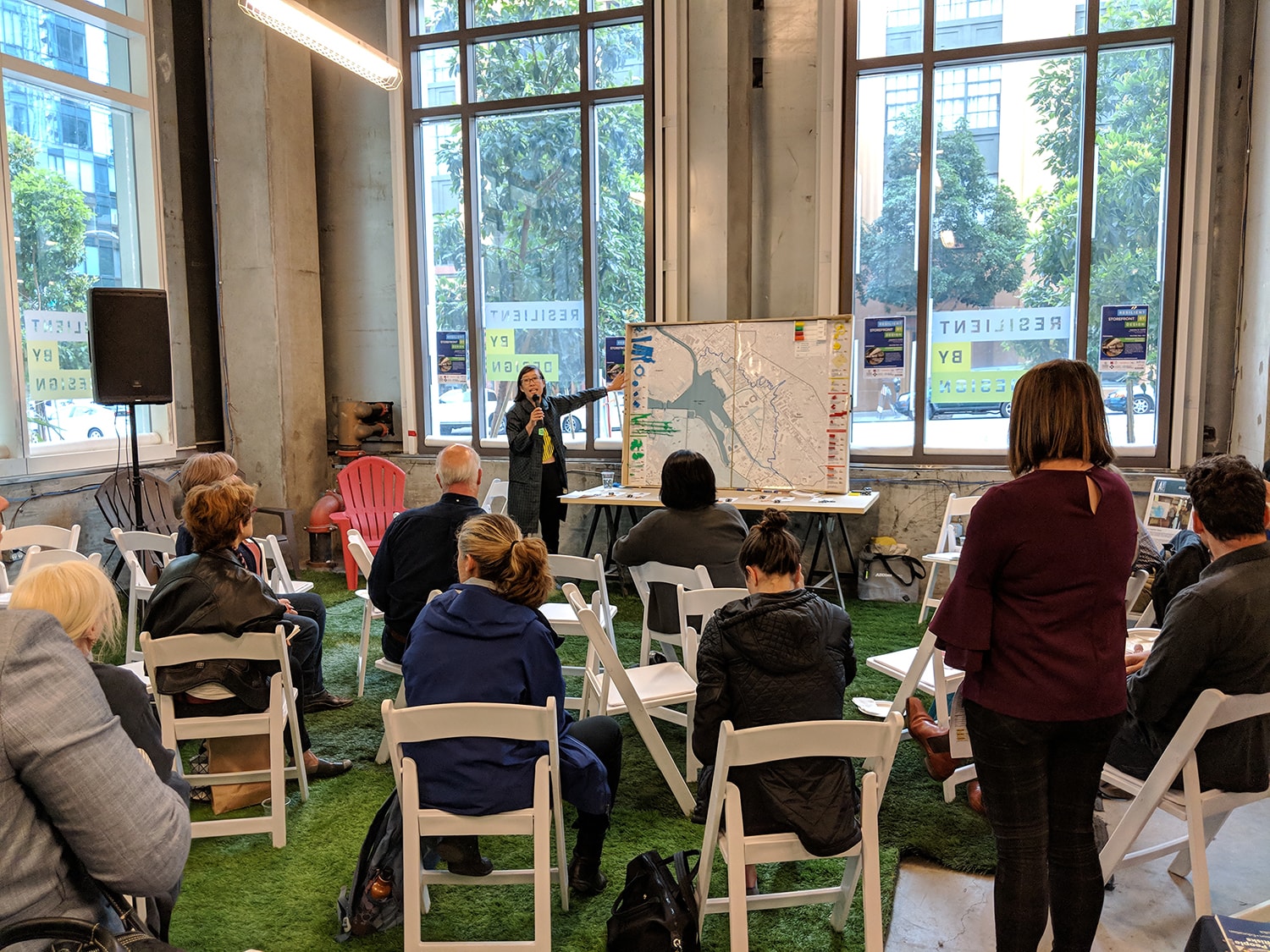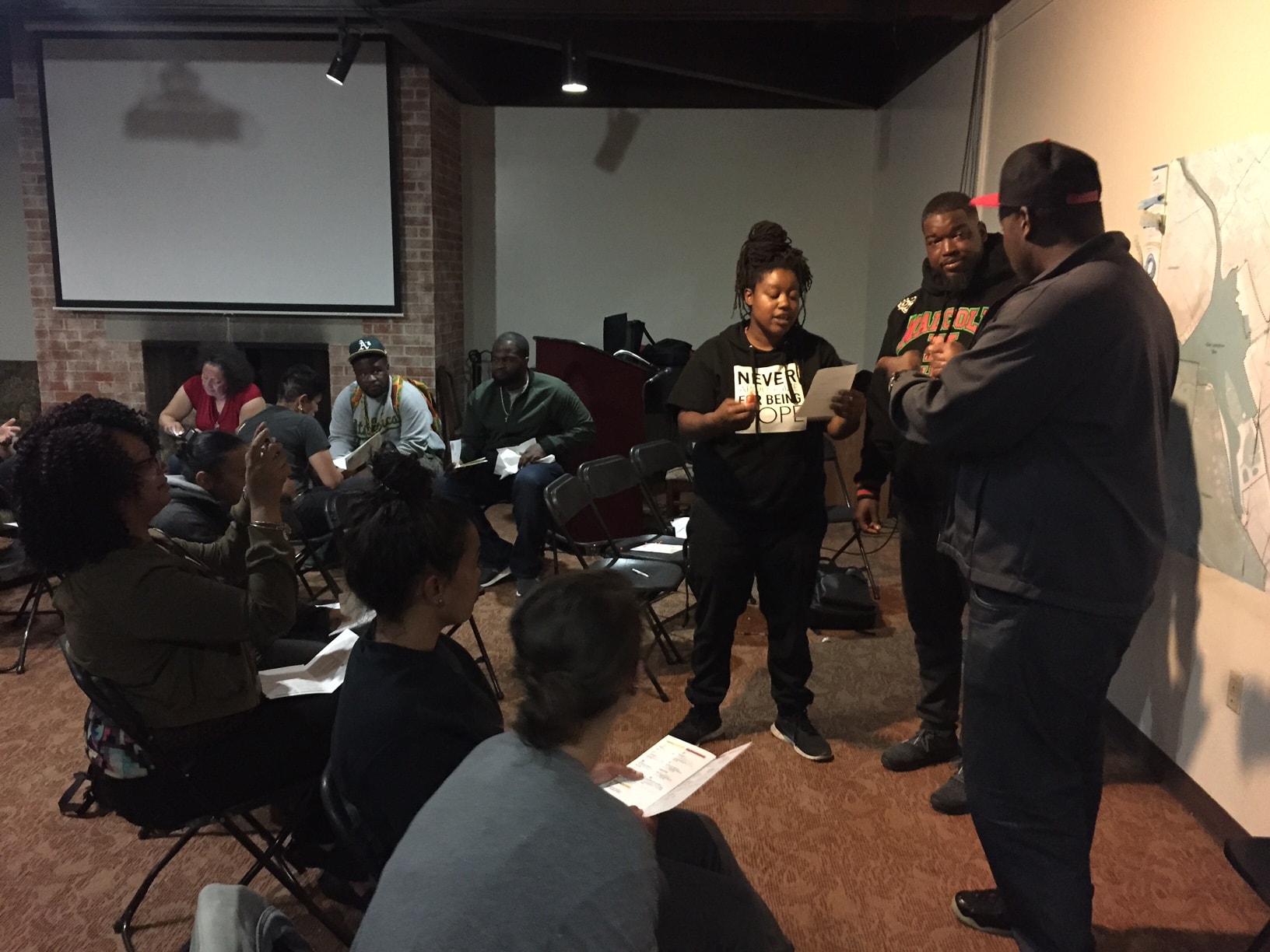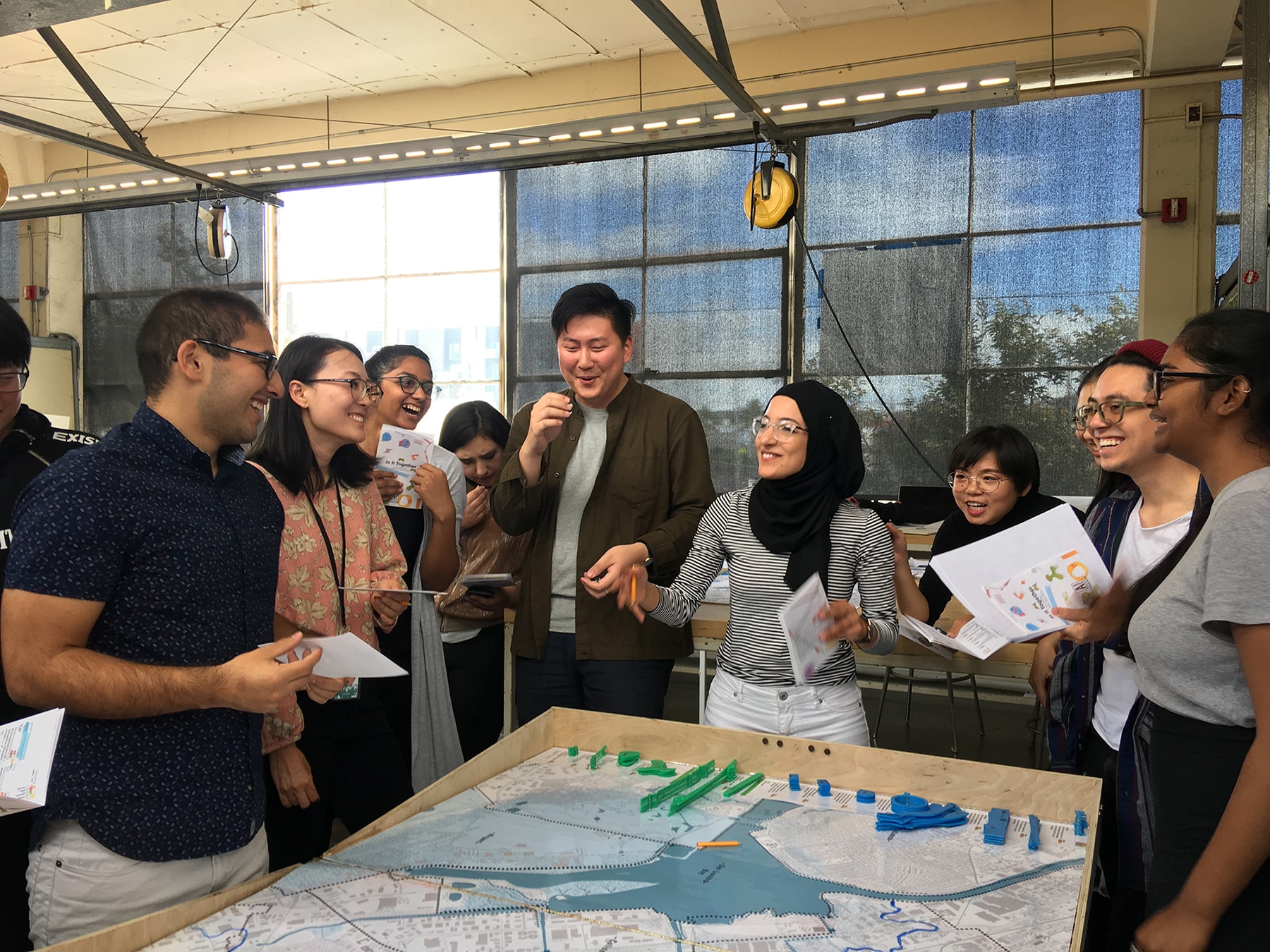In Flanders, energy and materials transition increasingly appear on the political agenda. Pilot installations recovering heat from deep geothermal subsurface layers, windmills, solar panels, neighborhood or industry park heat networks, and short chain biomass landscape waste valorization increasingly make their appearance in the Flemish energy landscape. Besides new technologies enabling sustainable energy production, alternative governance models such as energy co-ops and crowdfunding enable citizens to participate in energy transition [1]. As a result, public private partnerships realize large scale offshore wind farms, while civil society simultaneously initiates more localized energy co-ops. This diversification in energy infrastructure inevitable brings the question of power to the table. Who owns the infrastructure and who benefits from the produced energy?
Indeed, as with any new infrastructure, the question of power is central. Architect Stephen Graham and geographer Simon Marvin have argued that privatization politics behind infrastructure development often results in ‘Splintering Urbanism’ or mechanisms of exclusion [2]. Critical urban geographers such as Matthew Gandy highlight how “uneven distribution of natural resources and environmental hazards” are the result of “negotiations between political actors, ideological struggles, and power relations” [3].
Acknowledging the key role of politics behind infrastructure engineering and design, Greet De Block calls for urban and landscape designers to be more explicit about this political dimension in their designs [4]. Landscape architect Kate Orff even takes this a step furthers stating that “The answer isn’t just for designers to be political, but to design in a political context” [5].
Figure 1. Houthalen-Helchteren’s (HH) four main landscape types: mixed woodlands, forested wetlands, managed hedgerows, and heath, along with the biomass types that can be harvested from this landscape.
While critical theorists and historians are bringing discussions of power front and center in the energy conversation, design studies on Flemish energy landscapes tend to concentrate on spatial implications of new technologies [6]. They mainly focus on the quantification questions and the engineering challenge of 100% carbon neutrality by 2050. This initial focus on technology however does not imply that designers automatically overlook energy transition’s political dimensions. Adopting design research for a new biomass infrastructure in Limburg, this article unpacks how questions of power are foundational to urban design proposals for new (energy) infrastructures. The presented design unfolds how existing government plans and projects for a biomass infrastructure in Central Limburg could find synergies with seemingly unrelated site-specific challenges and opportunities, incorporating social and environmental agendas.
Landscape management waste as a resource
Limburg is one of Flanders’ greenest provinces consisting of four main landscape types: mixed woodlands, forested wetlands, managed hedgerows, and heath (Figure 1). Each of these landscape types follows specific growth and maintenance cycles, requiring specific equipment (Figure 2). Limburg’s Low Campine Regional Landscape Agency (RLLK), operationalizing the mission to reinforce the regional cultural landscape and nature, initiated the biomass square concept in the municipality of Houthalen-Helchteren (HH). With the biomass square initiative, RLLK aims to valorize landscape management waste as a resource, respecting natural cycles and supporting local stakeholders. Biomass square is a new step in collective landscape maintenance in which the land stewards share equipment and differentiate their income streams [7]. Biomass square gathers and sorts waste biomass over a 20km radius, to guarantee a CO2 neutral operation. In the square, the biomass is sorted, packaged, and redistributed as raw material for manufacturing use, such as construction materials, animal feed and, when no higher energetic value application is possible, for energy production through bio-digestion, producing heat or electricity.
Figure 2. Each landscape type has its own growth and maintenance cycle. Top: The cultural heath landscape maintenance cycle, and what happens when you stop maintaining it, bottom: the required phasing in the harvesting of biomass from hedgerows preserving a rich biodiversity.
Recovering previously untouched biomass from landscape management at a regional scale initiates new regional material flows, requiring new logistical operations. In other words, it requires a new infrastructural system (Figure 3).
RLLK’s new biomass infrastructure consists of physical components (such as places for storage, pick-up, packaging and redistribution, and is supported by DIPLA (‘Digital platform landscape’), a state-of-the-art digital planning tool. This efficient maintenance planning tool makes it possible to map and calculate exact real-time biomass volumes from landscape maintenance in an area. DIPLA enables RLLK to integrate landscape management waste valorization within their larger mission of landscape restoration and regeneration. For participating municipalities and stakeholders, the application provides a base that can improve the quality and efficiency of the harvesting process and calculate the cost and benefits of their harvesting activities [8].
Figure 3. The new biomass chain incorporating biomass recovery through harvesting, drying, weighing and selling it as raw material.
Collective landscape economies
As discussed in the previous section, the plans of the RLLK to valorize landscape management waste as biomass are highly contextualized while incorporating innovative solutions such as the DIPLA digital application. On one hand, the biomass collection follows natural landscape cycles and contributes to RLLK’s core mission to restore and regenerate threatened landscape ecologies. On the other hand, it empowers landowners to form new collective arrangements in maintaining their land through common maintenance strategies and new revenue [9]. This new collective arrangement valorizing natural resource flows recalls pre-industrial times when landscape maintenance in Central Limburg intensely intertwined social, economic and environmental dimensions.
Central Limburg comprised poor heath-covered sandy soils on the plateau, and fertile plateau edges and valleys. For military reasons, this inhospitable landscape was maintained as a buffer for future invasion by the Dutch [10]. Being largely isolated, the people of the Campine created their own ecosystems, commonly using the land and its resources. They sent their sheep out to pasture in the heath during the day. At night the sheep were gathered in stables where their manure enriched turf and sod collected from the heath. The farmers then used this fertilizer to make the surrounding common wasteland productive, plot by plot. Additionally, the farmers sold honey produced by bees on the heath, as well as clothes and ropes made from the sheep’s wool and hemp [11] (Figure 4).
Figure 4. The pre-industrial man-nature ecosystem in Limburg’s poor heath landscape and rich valley meadows.
Gradually these rather balanced and productive interplays between people and the landscape dissolved with increasing colonization of Limburg’s natural resources, such as the extraction of coal in the beginning of the 20th century [12]. This led to a privatization of the common heath landscape for different means. The privatization together with the invention of artificial fertilizer in the 18th century, ushered the beginning of the end for the vast heath landscapes and its rich ecology. Decades of manipulating the soil with artificial fertilizer, industrialization of agriculture and the resulting changing vegetation has been devastating for the region’s biodiversity (Figure 5 – 6).
Figure 5. In order to protect and improve Europe’s rich nature conditions, different areas were delimitated in 2006. The map shows these area’s in the region of the design in relation to its rich and endangered biodiversity. The area marked in red is the ecological corridor as demarcated by the Flemish Government.
Figure 6. Showing the most endangered species in the region. All four species are currently on the verge of extinction, due to disappearance of their natural habitats.
Designing a socio-ecological biomass infrastructure
The following designs for a place specific socio-ecological biomass infrastructure build onto the logics articulated in the previous sections. Firstly, Central Limburg’s pre-industrial landscape economies collectively redistributed natural material flows, working the heath landscape as a common resource pool. Secondly, RLLK’s biomass square project and supporting infrastructure clearly frame economic revenue from biomass in a broader mission of landscape restoration and farmer empowerment. The following designs incorporate these two notions and project how rolling out this new biomass infrastructure in HH could empower even more actors and address even more site-specific environmental challenges. The designs result from a sequence of design studios, on-site fieldwork, desktop research, regular stakeholder consultations through workshops and meetings with administrations, culminating in an intensive international urban landscape design workshop with stakeholders in February 2016 and a master thesis in 2017 [13]. The designs envision the new biomass logistical chain as a hybrid infrastructure reviving inhabitants’ relationship with their natural environment as well as an opportunity to reconnect currently disconnected actors and spaces in synergetic collaborations and programs (Figure 7).
Figure 7. Projected landscape transformations with the introduction of a contextualized biomass infrastructure including education and job creation, water management and purification and landscape biodiversification
Figures 8 and 9 below imagine how HH’s metabolic shift to clean technology and reuse of waste flows could become a lever for social innovation in Meulenberg. It connects investments in biomass infrastructure to social challenges in that area and imagines them. At the turn of the century, the former utopic garden city had transformed into a spatially isolated and stigmatized social housing enclave. At the time of the design workshop in 2016, youth unemployment in Meulenberg was one of the highest in Limburg and tensions in this area were significant [14]. Working in close collaboration with HH’s civil servant responsible for housing and spatial planning, the designers gained some insight in Meulenberg’s complex challenges. The designers conducted fieldwork by bicycle, visiting Meulenberg’s community spaces, such as collective gardens and kitchens, and other key places in Meulenberg’s social tissue.
Figure 8. imagines how the biomass infrastructure in HH could become a lever for social innovation in Meulenberg.
The design proposal below explores new ways to reconnect Meulenberg to HH’s social, economic and spatial tissue, through synergies with existing initiatives in HH, such as clean tech incubator Greenville and the new biomass square. An intervention to catalyze this transformation is proposed in Meulenberg’s center, a large parking lot next to a school bordered by one of the remaining social housing towers soon to be demolished. This public space can become a ‘testing ground’ for collaborations between Meulenberg’s population, Greenville and the planned regional biomass hub in HH (Figure 9).
A clean tech satellite in Meulenberg could be a testing ground for clean tech prototypes related with typical Meulenberg activities while creating local jobs. For example, the Greenville Billiebin [15], a low-tech composting bin using worms, could be tested, evaluated and refined using Meulenberg gardeners and cooks’ expertise. The vacant tower building could be occupied as a pop-up Greenville satellite, with workplaces and laboratories, using the blind façade as a billboard. The suggested activities could go hand in hand with a collection point for landscape waste to be transported to HH’s new biomass hub with cargo bikes. This productive central space in Meulenberg could house local farmer’s markets and become a demonstration site for the community farming already having a long tradition in Meulenberg. In a few years, the historical connection between Greenville and Meulenberg could be revived through a combination of social and economic innovations, guided by spatial interventions and initiatives.
Figure 9. Envisioned transformation of a vacant parking lot in Meulenberg with the inclusion of programs supporting the new biomass infrastructure while empowering the local population.
In a similar way, schools could play active roles in the collection of organic waste from households. Coupling the biomass infrastructure development to education increasingly includes actors and raises awareness about people’s potential roles in landscape and ecosystem stewardships.
Figure 10. Europark becomes the new spill in the biomass economy by housing the biomass square as a bridge between the local and natural tissue.
Finally, the design research envisioned how on a larger scale biomass recovery and landscape restoration could simultaneously contribute to the construction of an ecological corridor. The reconversion of industry park Europark as a key in the biomass recovery gradually stitches landscape structures into the required ecological connections.
In the beginning selecting strategic biomass sheds can create win-wins for the overall landscape restoration. In time, the maintenance of the landscape within the biomass economy will expand. Europark as ‘biolabo’ park is introduced, adopting its empty lots as catalysts for biomass related industries. More to the north at the former military domain ‘de kazerne’ a new knowledge center can function as entrance to the domain for local inhabitants and as a local learning center to become experts in harvesting biomass from landscape maintenance. In this manner creating a local embedded economy answering to the higher unemployment rates of low educated people in the region.
Once these structures are implemented, they can be enhanced by extending the bicycle network, connecting the municipality’s main infrastructure with the military domain and the ecological corridor. Creating a knowledge bike path, where the changing of the landscape and the economic value of the landscape is put at front.
As such, the designs articulate how the biomass infrastructure development could reinforce community building as well as contribute to the regional ecological networks. Even though the design investigations for a socio-ecological biomass infrastructure in this paper don’t explicitly address politics or power, fair redistribution of the surplus values captured from biomass recovery is clearly at the heart of the designs. Local actors and stakeholders from the municipality and RLLK fed the design process and vice versa, the design process inspired them with tangible alternatives.
Figure 11. The implementation of the biomass economy in HH is overall used as a landscape structuring devise. Increasing the ecological value of the region and reinforce community building.
Designer Roles
Energy and materials transition in Flanders will inevitably go hand in hand with transforming landscapes. Adopting place-based imaginaries of these possible transformations, urban designers can simultaneously help reimagining social and political conditions.
Co-created future imaginaries open a world of possibilities and communicate them to stakeholders. They synthesize social, economic and ecologic questions in space as a starting point to imagine alternative territorial metabolisms. Future imaginaries mediate between different agendas and interests and indicate potential involvement, relationships between users, makers, decision-makers. They act as an invitation for any discipline to engage in the articulation of the future. The future imaginary functions as a common language between politics, administration, economics, market, ecology, with the capacity to absorb distinct perspectives. Future imaginaries initiate conversations and redirect them from theoretical conversations about principles to concrete explorations of needs, and application of principles. They translate a set of perceived problems into a series of opportunities, triggering ‘ah-ha’ moments in non-hierarchical ways. Their creation process allows continuous absorption of stakeholder or expert reactions in an iterative way. The future imaginary is projective per definition, meaning it creates a new fact. It’s not about discussions about what is, but about reactions to concrete possibilities, tested in a minimal way, through the creative act of drawing.
 Julie Marin studied engineering architecture at Ghent University (’07) and urban design at the GSAPP, Columbia University (’12). Her PhD design research is entitled ‘Circular Economy Transition in Flanders. An Urban Landscape Design Contribution’ (University of KU Leuven ’19). Before 2015 Julie worked as architect at the City of Antwerp and as urban designer at Scape / Landscape Architecture in New York City. She was Associate in Architecture at the GSAPP Urban Design Program and currently teaches in urban design studios and design seminars at KU Leuven.
Julie Marin studied engineering architecture at Ghent University (’07) and urban design at the GSAPP, Columbia University (’12). Her PhD design research is entitled ‘Circular Economy Transition in Flanders. An Urban Landscape Design Contribution’ (University of KU Leuven ’19). Before 2015 Julie worked as architect at the City of Antwerp and as urban designer at Scape / Landscape Architecture in New York City. She was Associate in Architecture at the GSAPP Urban Design Program and currently teaches in urban design studios and design seminars at KU Leuven.
 Charlotte Timmers (1991) studied engineering architecture at the University of KULeuven, and graduated from the postgraduate master of Urbanism and strategic planning at KULeuven in 2016. She currently works for the Flemish Government on territorial development for the Department of Environment. She has a strong interest in the interplay between productive landscapes and the ecological and social relations they could initiate.
Charlotte Timmers (1991) studied engineering architecture at the University of KULeuven, and graduated from the postgraduate master of Urbanism and strategic planning at KULeuven in 2016. She currently works for the Flemish Government on territorial development for the Department of Environment. She has a strong interest in the interplay between productive landscapes and the ecological and social relations they could initiate.
 Bruno De Meulder (1960) studied architecture at the University of KULeuven where he also developed a doctoral dissertation on urbanism in the Belgian Congo. Currently, he teaches urbanism at the KULeuven where he is vice-director of the Department of Architecture and co-director of the post-graduate programs of human settlements and urbanism. In his research theory and practice, analysis and design, history and contemporary urban practices cross.
Bruno De Meulder (1960) studied architecture at the University of KULeuven where he also developed a doctoral dissertation on urbanism in the Belgian Congo. Currently, he teaches urbanism at the KULeuven where he is vice-director of the Department of Architecture and co-director of the post-graduate programs of human settlements and urbanism. In his research theory and practice, analysis and design, history and contemporary urban practices cross.
Notes
[1] “Energiecooperaties en crowdfunding in Vlaanderen”, Vlaamse overheid, accessed May 22, 2019. https://apps.energiesparen.be/energiekaart/vlaanderen/cooperaties
[2] Graham, Stephen and Simon Marvin. Splintering urbanism: networked infrastructures, technological mobilities and the urban condition. Repr. ed. London: Routledge, 2003.
[3] Soares, Pedro Paulo. “Gandy, Matthew. 2014. The Fabric of Space: Water, Modernity, and the Urban Imagination. Cambridge USA: The MIT Press. Reviewed by Pedro Paulo Soares.” Journal of Political Ecology 22, no. 1 (2015): 488-89.
[4] De Block, Greet. “Ecological Infrastructure in a Critical-Historical Perspective: From Engineering ‘Social’ Territory to Encoding ‘Natural’ Topography,” Environment and Planning A, no.48 (2) (2016): 367–390.
[5] Orff, Kate as quoted in “The Green New Deal is really about designing an entirely new world”, accessed October 29, 2019. https://www.curbed.com/2019/9/19/20872719/green-new-deal-infrastructure-design
[6] “Rapport: Energielandschappen”, (March 2016) accessible in full at https://www.vlaamsbouwmeester.be/nl/instrumenten/labo-ruimte/energielandschappen
Follow up of this rapport is the Strategic Project ‘Energielandschappen Oost-Vlaanderen’, accessed May 22, 2019. https://www.energielandschap.be/.
Labo Ruimte. “Rapport: Atelier Diepe geothermie”, (March 2016) accessible in full at https://www.vlaamsbouwmeester.be/nl/instrumenten/labo-ruimte/atelier-diepe-geothermie
[7] ‘Biomassaplein’ (2018), Biomassaplein cvba. accessed May 22, 2019, https://www.biomassaplein.be/
[8] ‘Digitaal platform voor Landschapsbeheer’, Profisi, accessed May 22, 2019. http://www.dipla.be/dipla.html
[9] Dehaene, Michiel “Circulaire gebiedsontwikkeling – een skeptische reflectie. Pleidooi voor een metabolische praktijk?” presented at Denktank Circulaire Gebiedsontwikkeling OVAM-OVK 24 April 2019
[10] Van Acker, Maarten. “An emerging national test site.” In From flux to frame: designing infrastructure and shaping urbanization in Belgium, 36-40. Leuven: Leuven University Press, 2014.
[12] Marin, Julie and Bruno De Meulder, “Urban landscape design exercises in urban metabolism: reconnecting with Central Limburg’s regenerative resource landscape.” Journal of Landscape architecture (Jola), no. 13:1 (2018): 36-49.
[13] The discussed design investigations in Houthalen-Helchteren were initiated and coordinated by OSA (Research group of urbanism and architecture) as part of a PhD project by Julie Marin (2014-2019) and a master thesis by Charlotte Timmers (2016-2017), supervised by Prof. Bruno De Meulder. More details on the designs, studio and workshop participants can be consulted in the following reports:
Julie Marin, Matteo Motti and Bruno De Meulder (eds.), Waste(d). Connecting Cycles, Rethinking Infrastructures (KU Leuven, 2015), https://issuu.com/ juliemarin5/docs/booklet_campine_studio_2015_email
Julie Marin, Erik Vandaele and Bruno De Meulder (eds.), Upcycling Limburg. Evisioning Transition along the Coal Track (University of Leuven, 2015), https://issuu.com/juliemarin5/ docs/upcycling_limburg_mahsmausp_ fall201
Julie Marin, Matteo Motti and Bruno De Meulder, ‘Atelier # 1’, in: Joeri De Bruyn et al. (eds.), Het Kolenspoor getest (Mechelen: Public Space en Ruimte Vlaanderen, 2016), 189–248, https:// issuu.com/toplimburg/docs/atlas_iabr_ final_v3_13-04-2016.comp.
Timmers, Charlotte “Biomassing Central Limburg: Towards a socio-ecological structuring of Houthalen-Helchteren.” Thesis diss., Catholic University of Leuven (KULeuven), 2017.
[14] Media report riots in Meulenberg in 2013 and razzia’s in 2015.
“ Rellen in Houthalen: agent loopt schedelfractuur op.” Het laatste nieuws, October 11, 2013. https://www.hln.be/nieuws/binnenland/rellen-in-houthalen-agent-loopt-schedelfractuur-op~a14f42a8/.
MaLu, “Opnieuw grootschalige drugactie in Meulenberg.” Het belang van Limburg, October 12, 2015. https://www.hbvl.be/cnt/dmf20151012_01914905/opnieuw-grootschalige-drugactie-in-meulenberg.
[15] ‘Billie Bin’ (2014-2019), Green provision bvba, accessed May 22, 2019. https://www.billiebin.com/
Figure sources
Figure 1-7 and 10-11: Timmers, Charlotte, “Biomassing Central Limburg: Towards a socio-ecological structuring of Houthalen-Helchteren.” Thesis diss., Catholic University of Leuven (KULeuven), 2017.
Figure 8-9: Marin, J., Motti M., De Meulder B. Atelier # 1. In: Het kolenspoor getest. Mechelen: Public space. p.35 (2016). (see also note 12)
Acknowledgements
This research is made possible with the support of the Research Foundation-Flanders (FWO). The authors would like to thank the municipality of Houthalen-Helchteren, Departement Omgeving Vlaanderen, and Regionaal Landschap Lage Kempen for their contributions to the design research. Furthermore, thank you to our design studio collaborators Matteo Motti, and Erik Van Daele, as well as the participants of the University of Leuven’s Urbanism Studios in 2015 and Urban Landscape Design Workshop in Houthalen-Helchteren in 2016. More details on the design results and the names of the participants can be consulted via links in note 13.
Cite
Julie Marin, Charlotte Timmers, and Bruno De Meulder, “Biomass for all: designing an inclusive biomass infrastructure in Central-Limburg, Flanders,” Scenario Journal 07: Power, December 2019, https://scenariojournal.com/article/biomass-for-all/.







